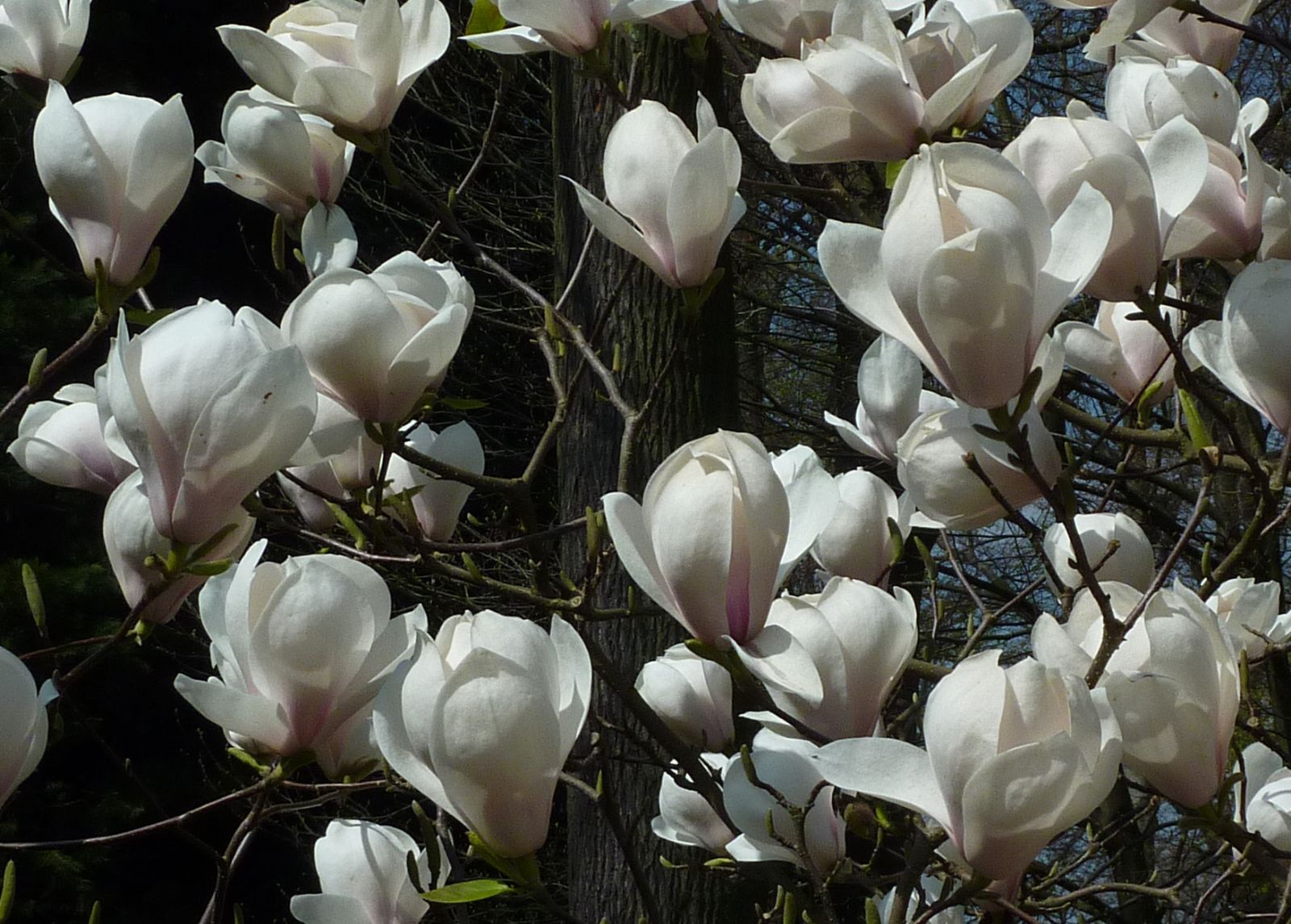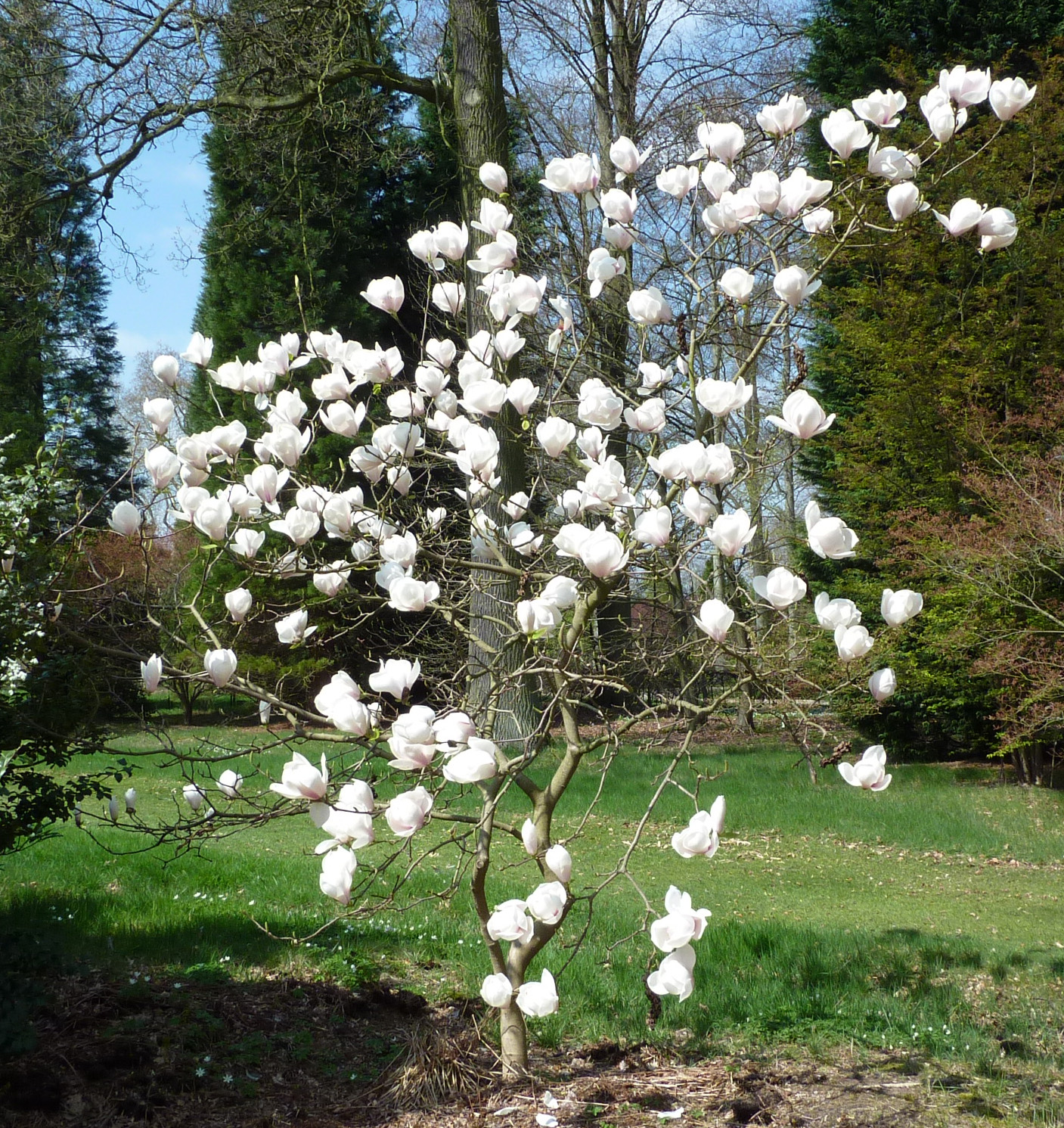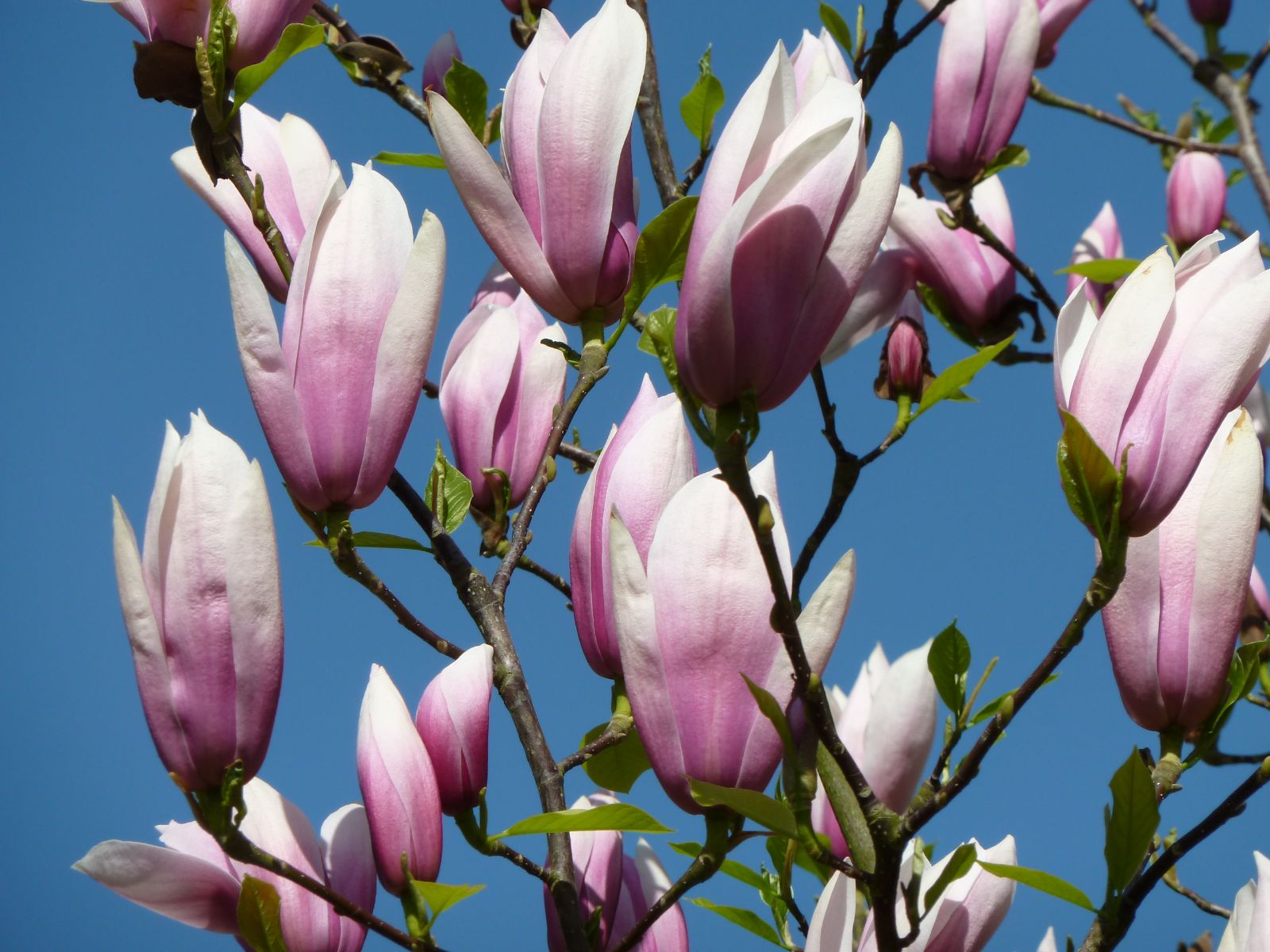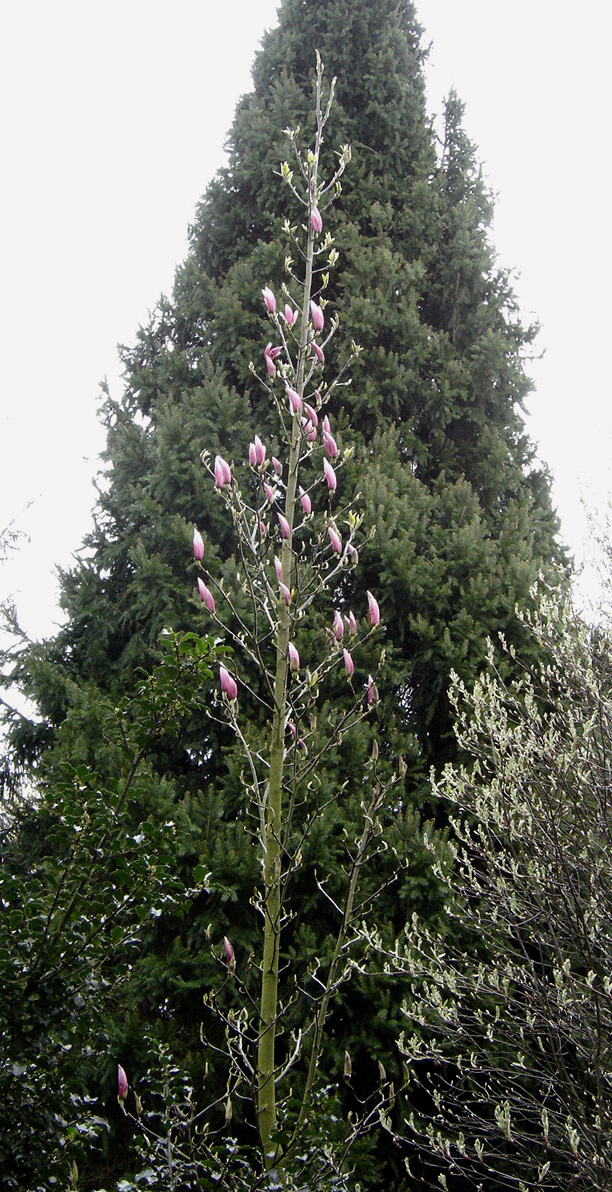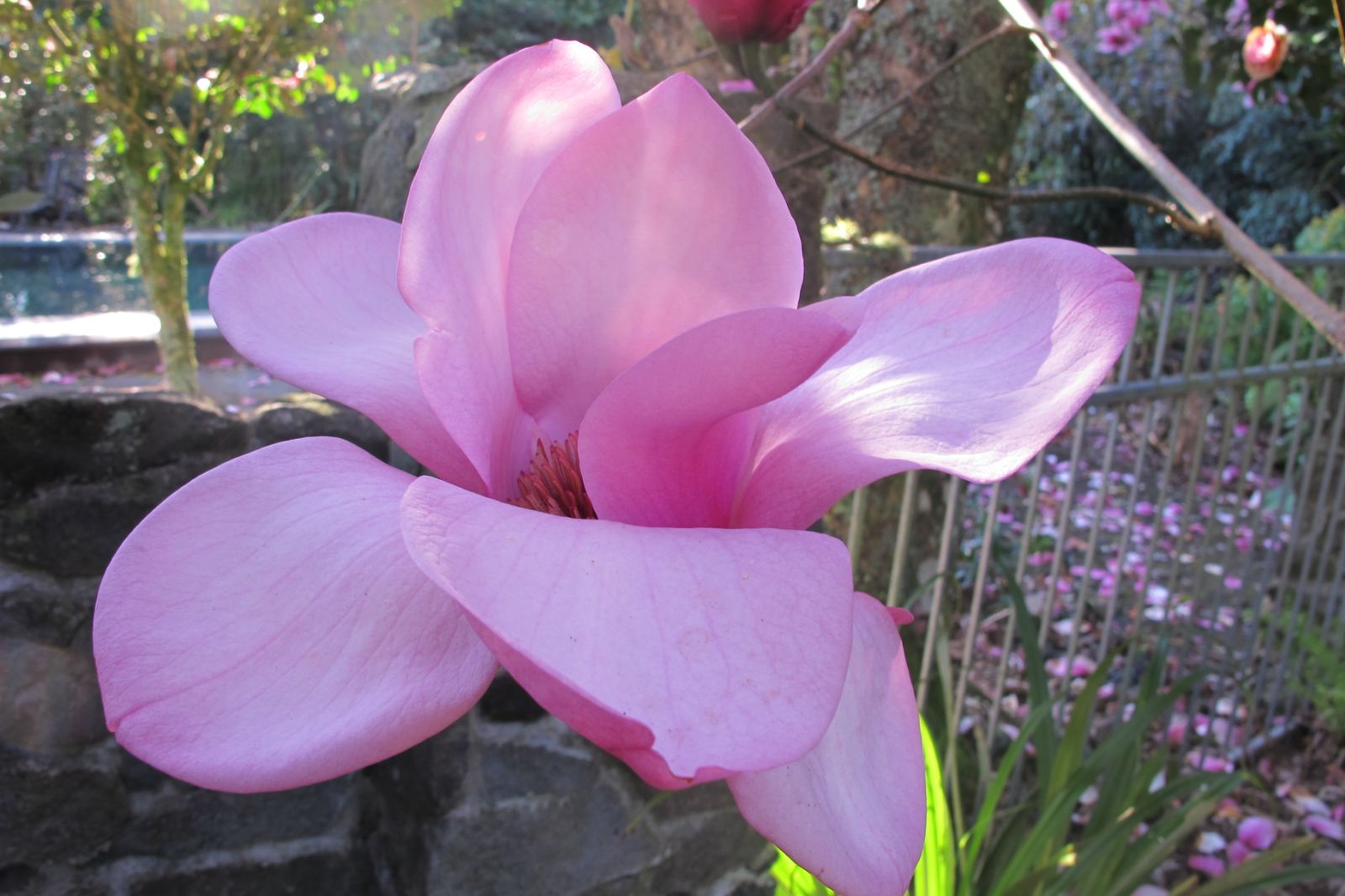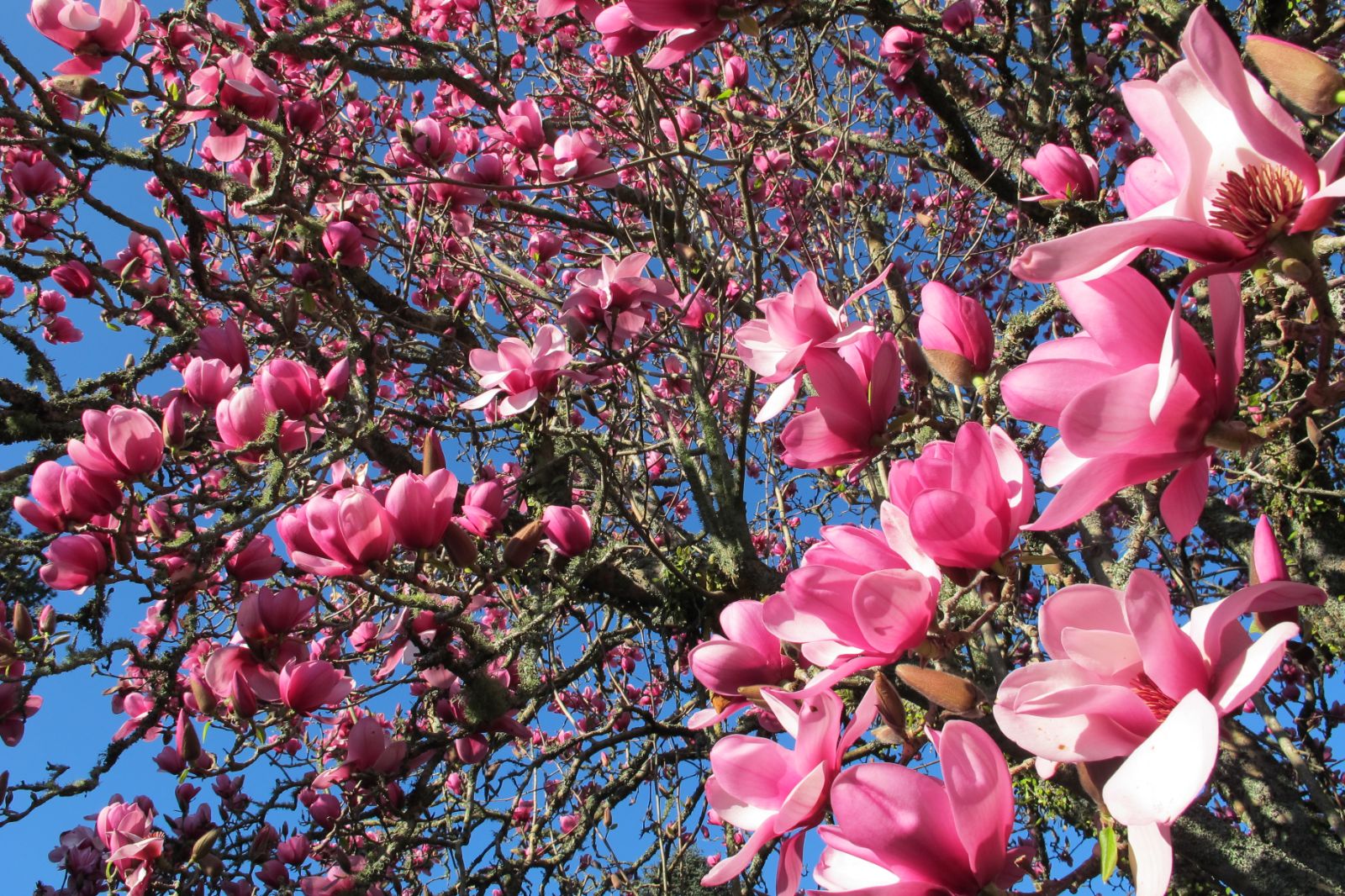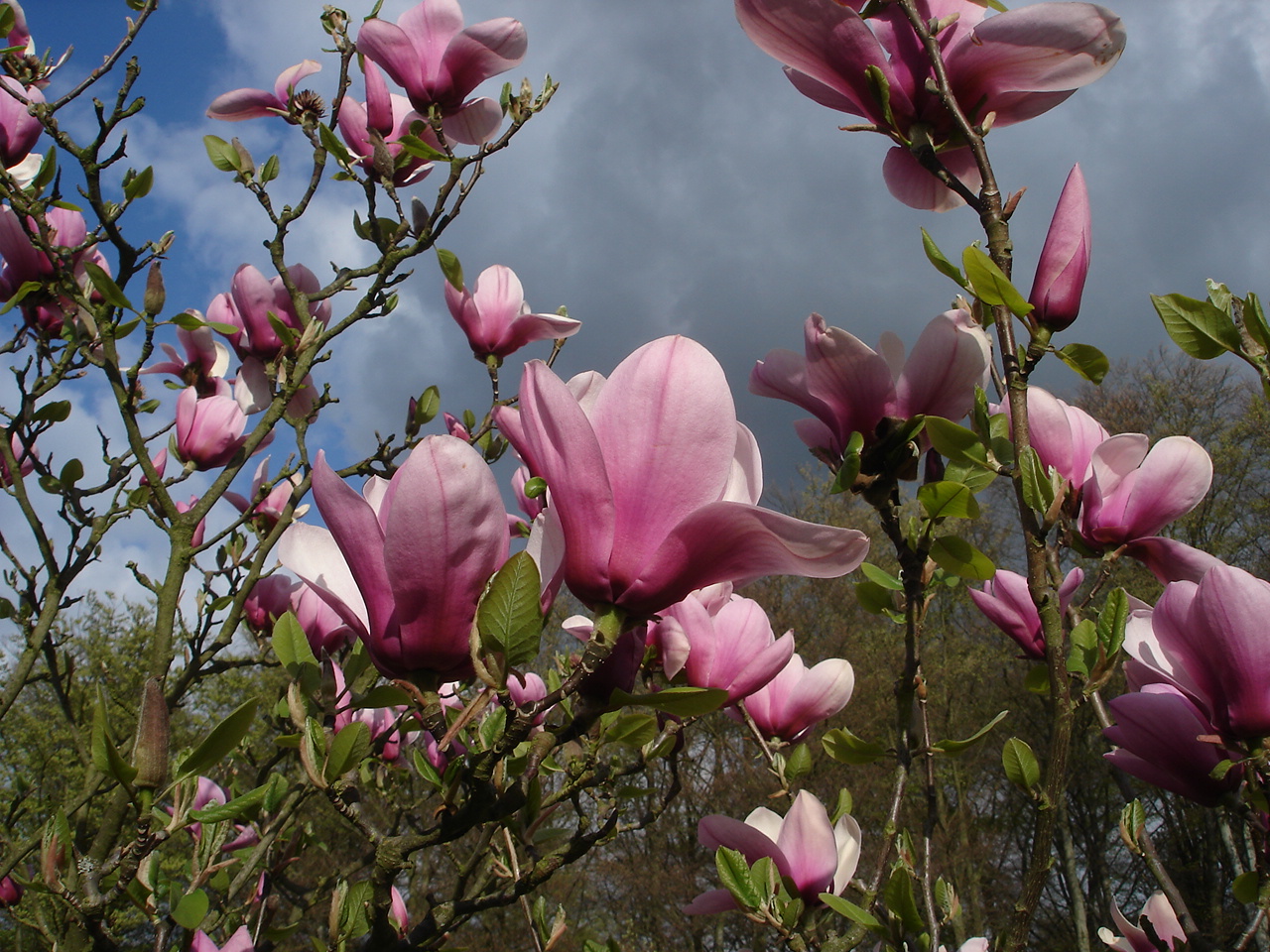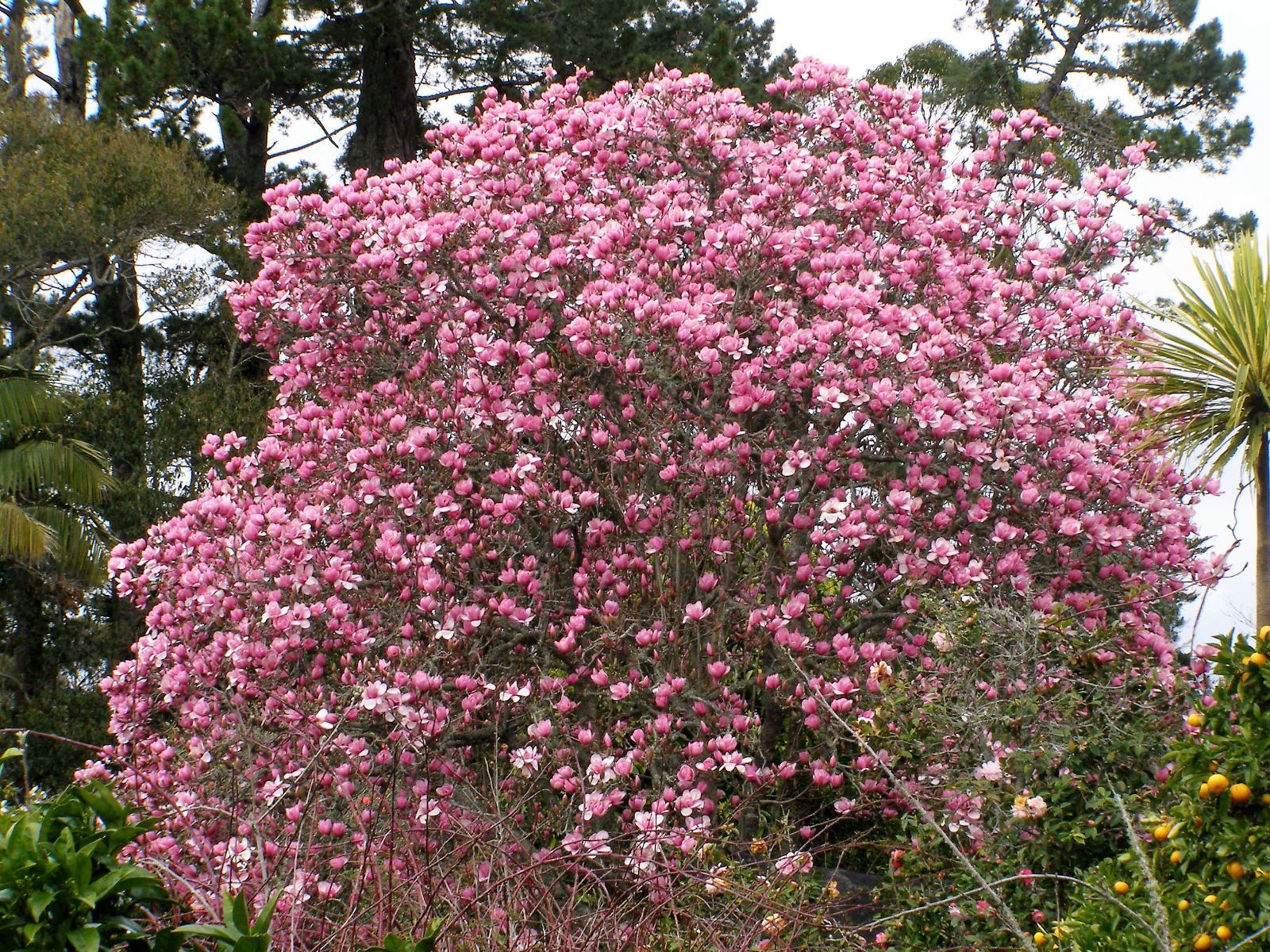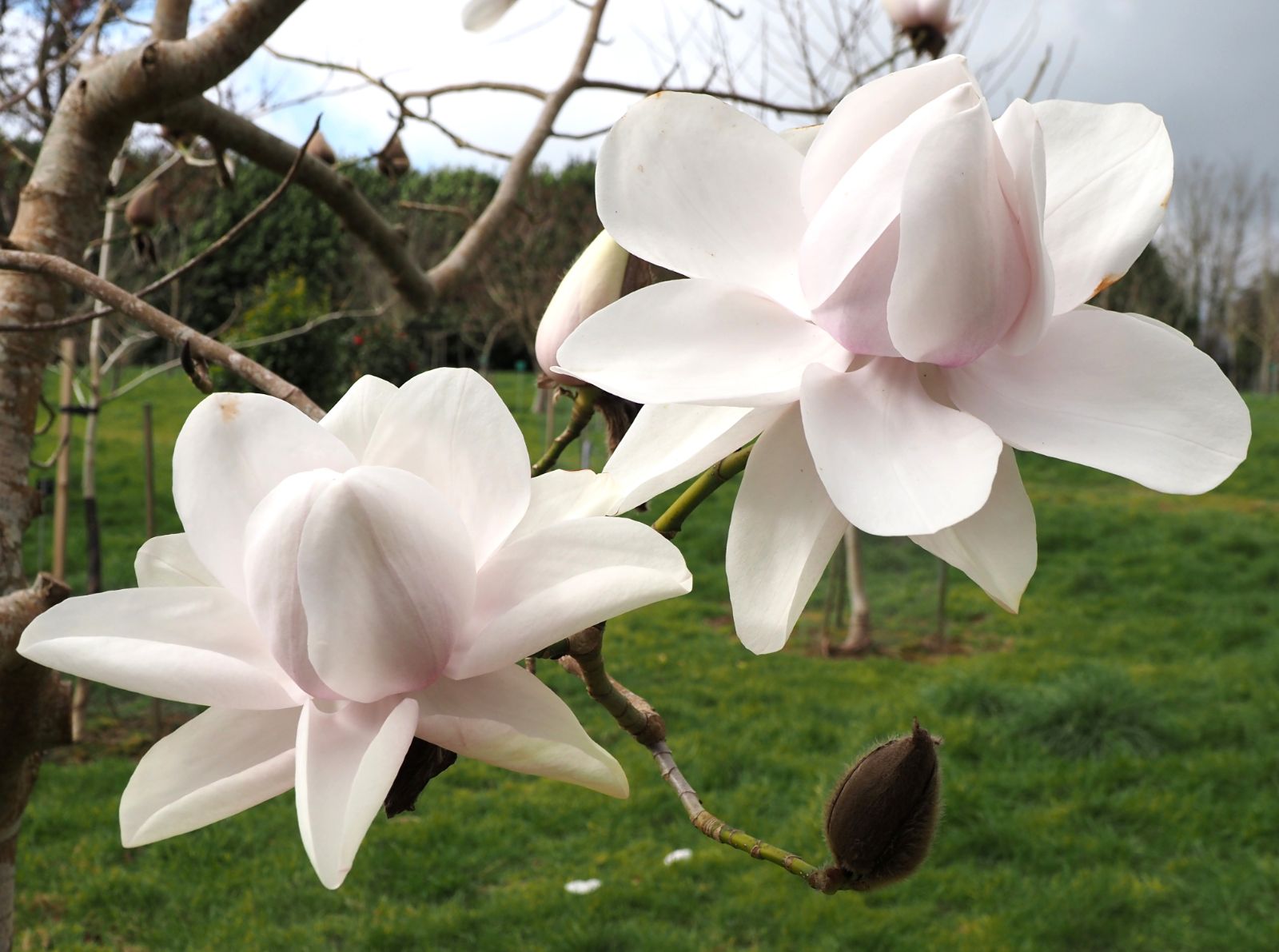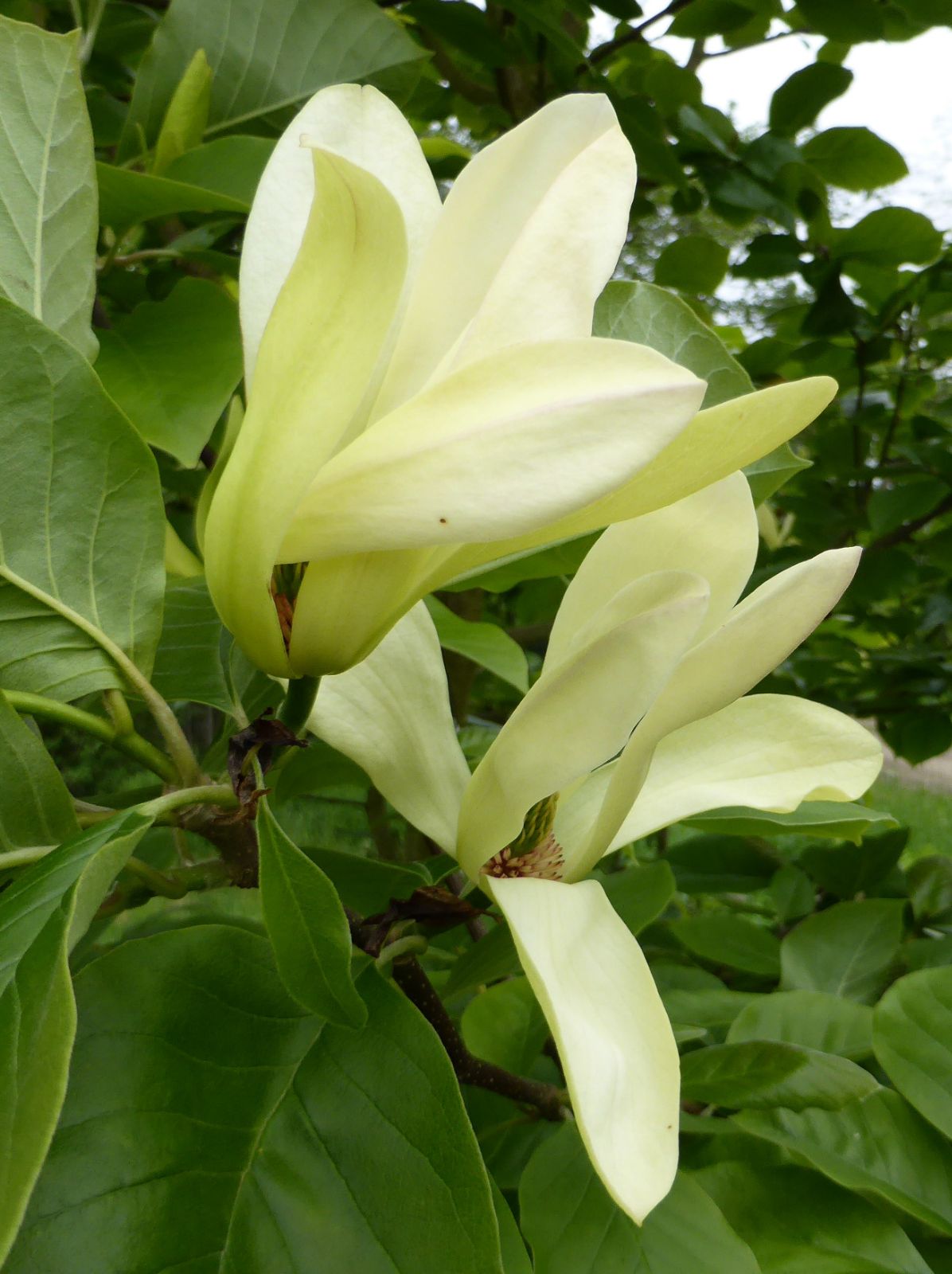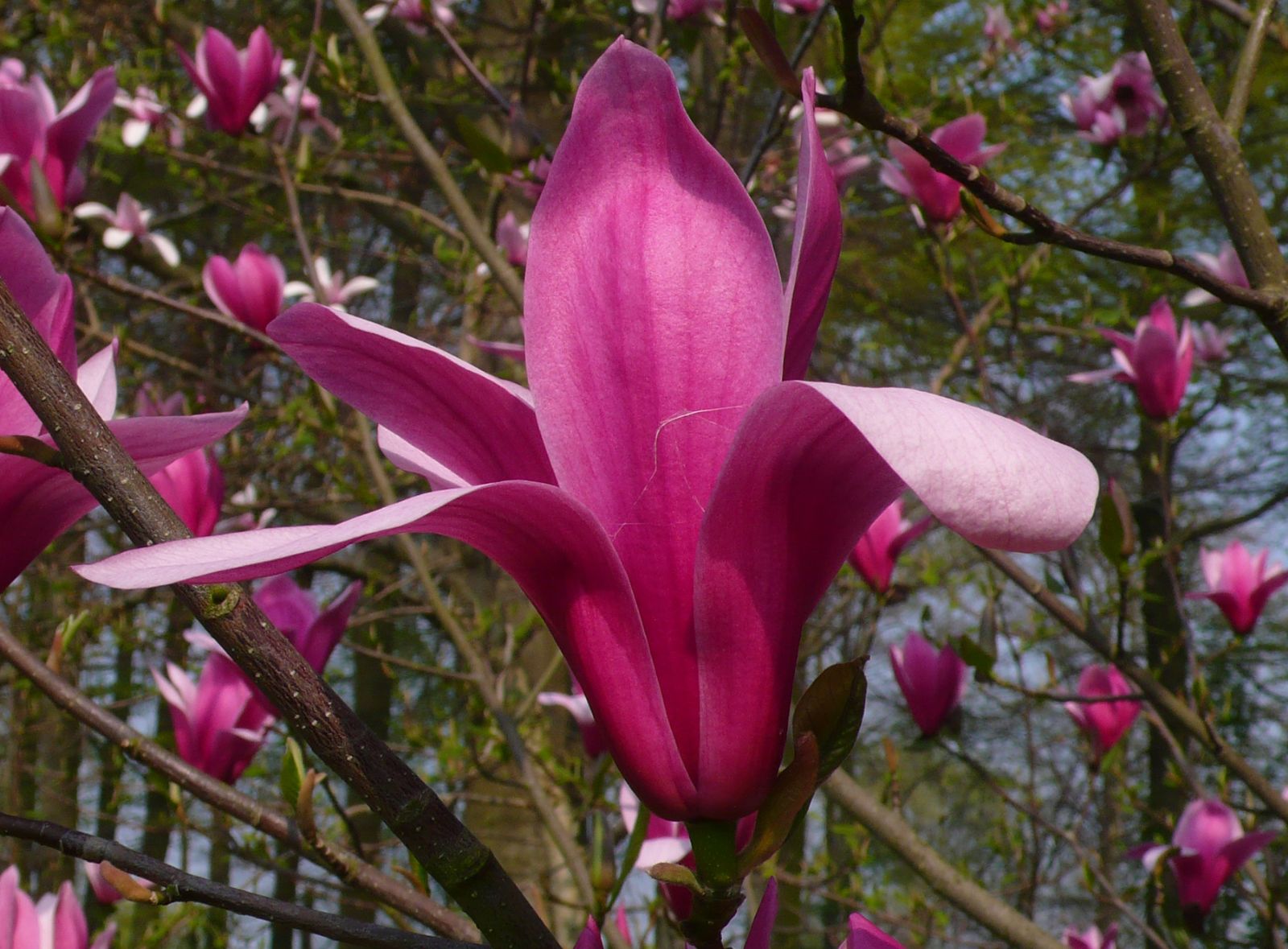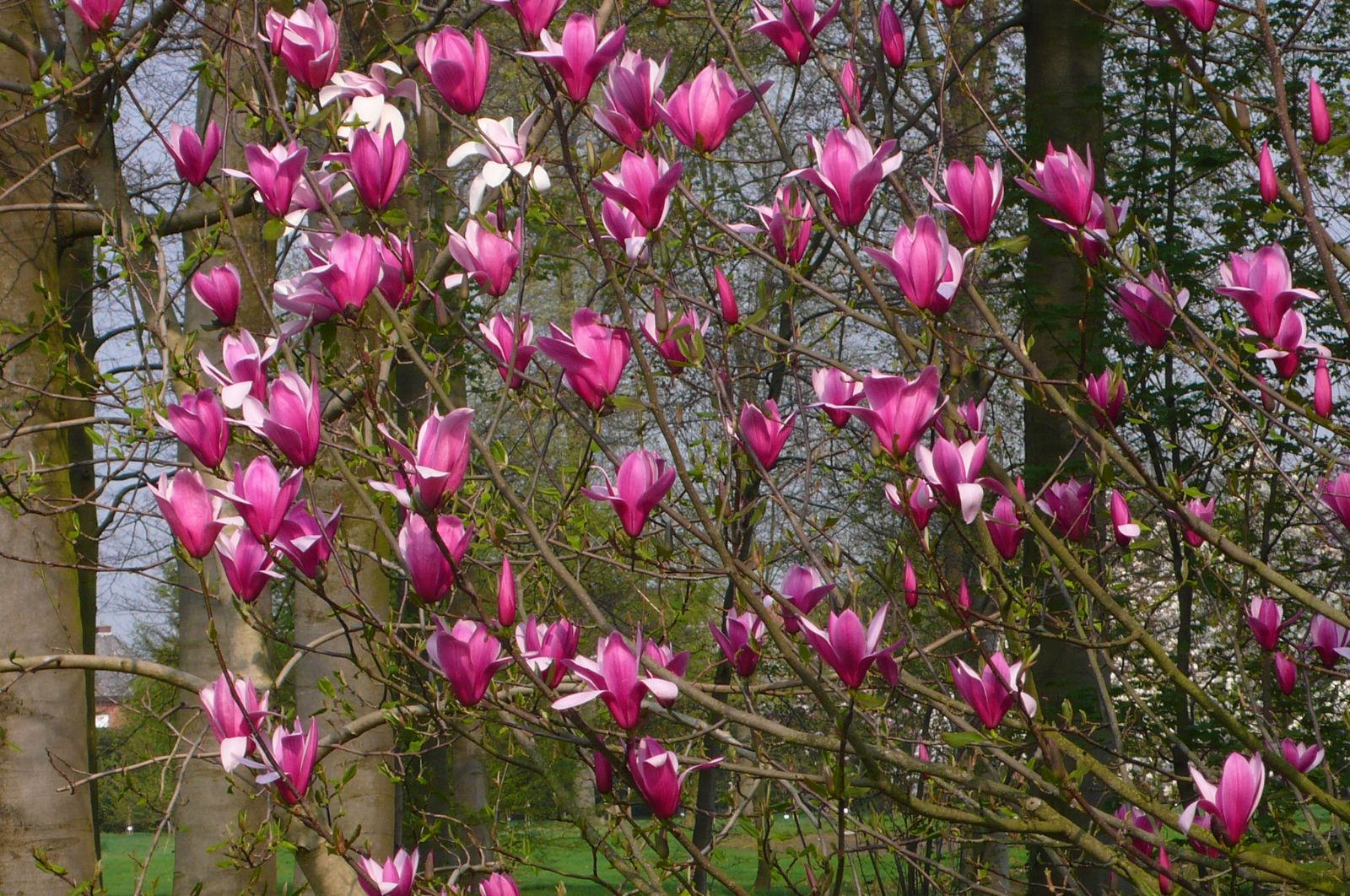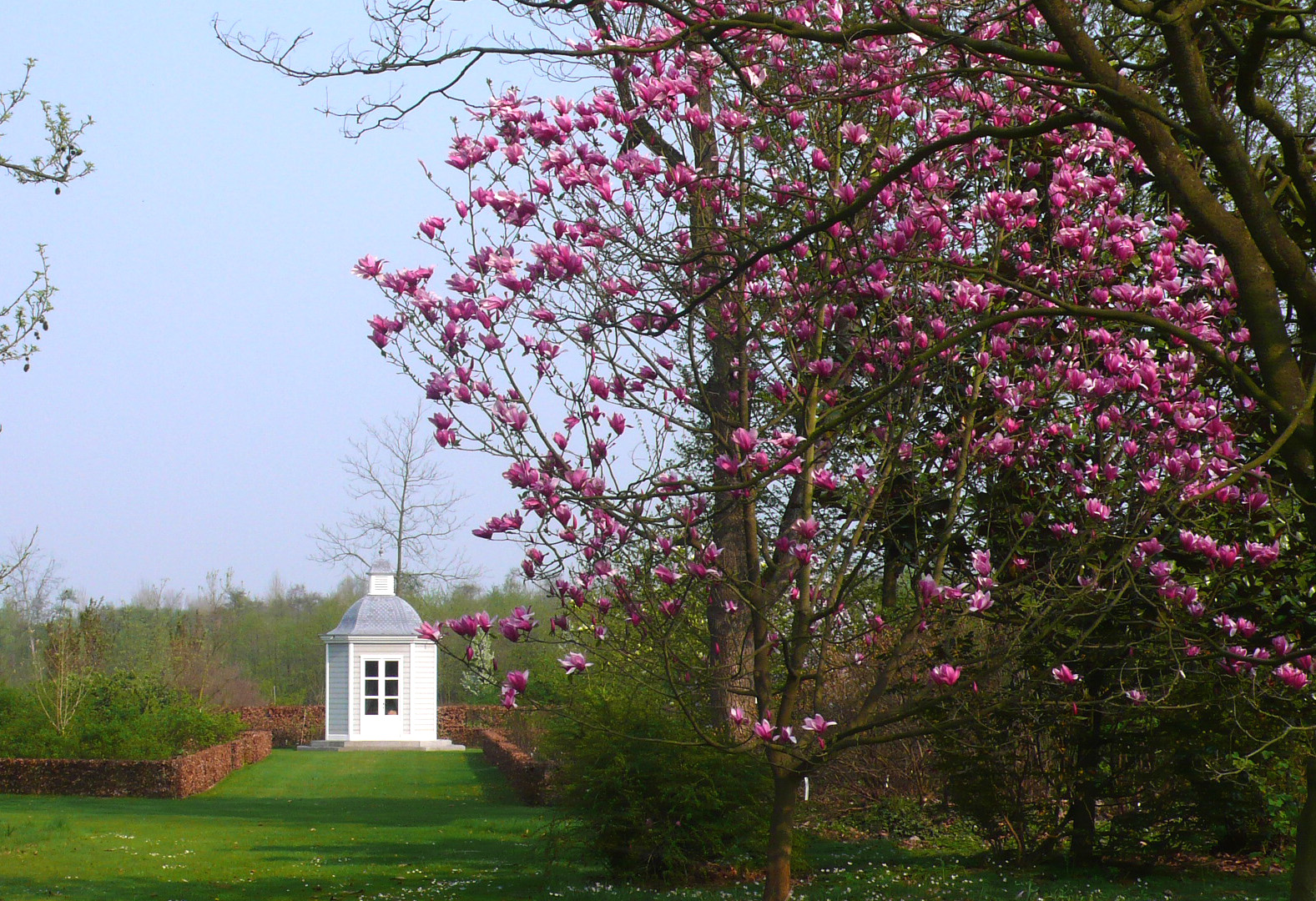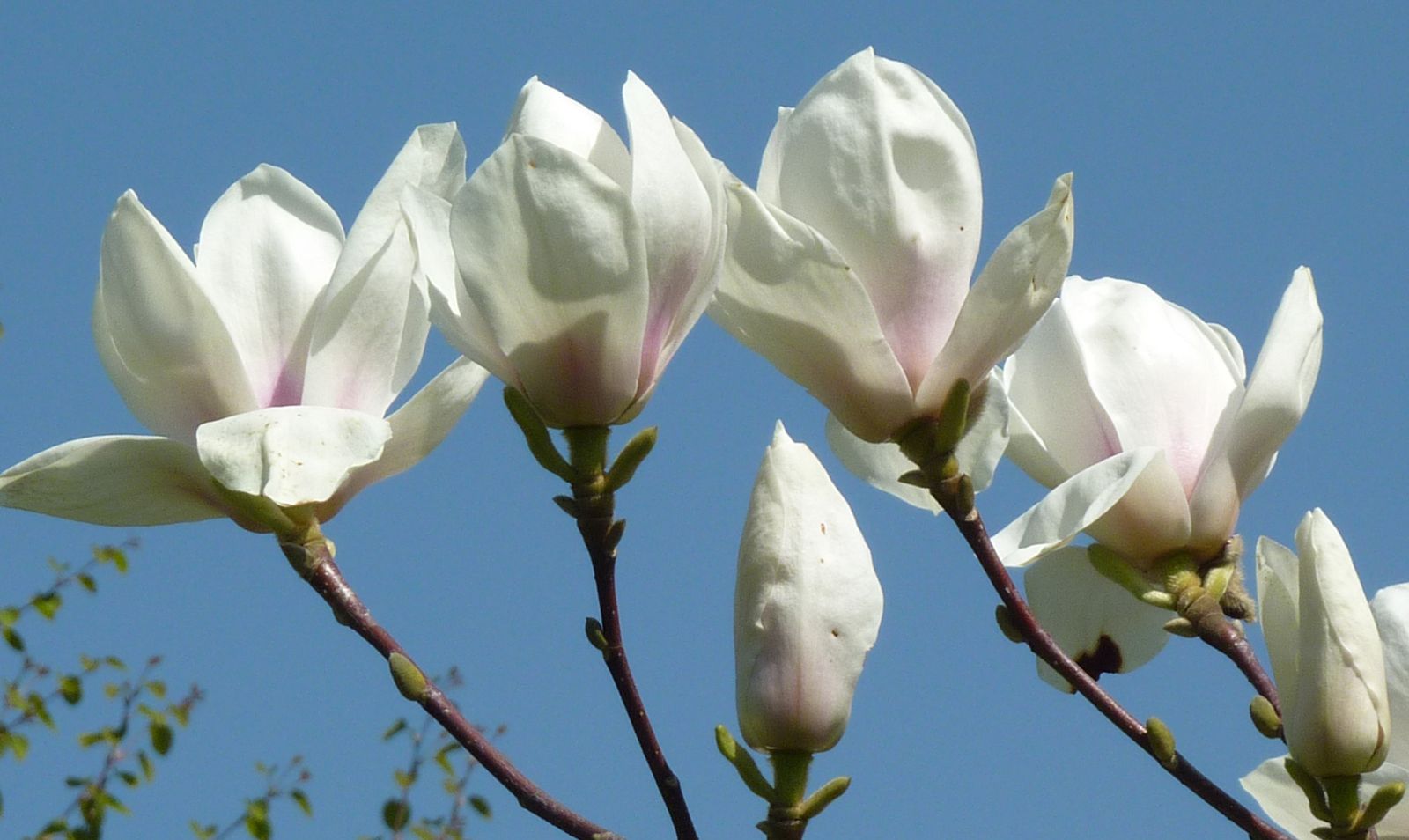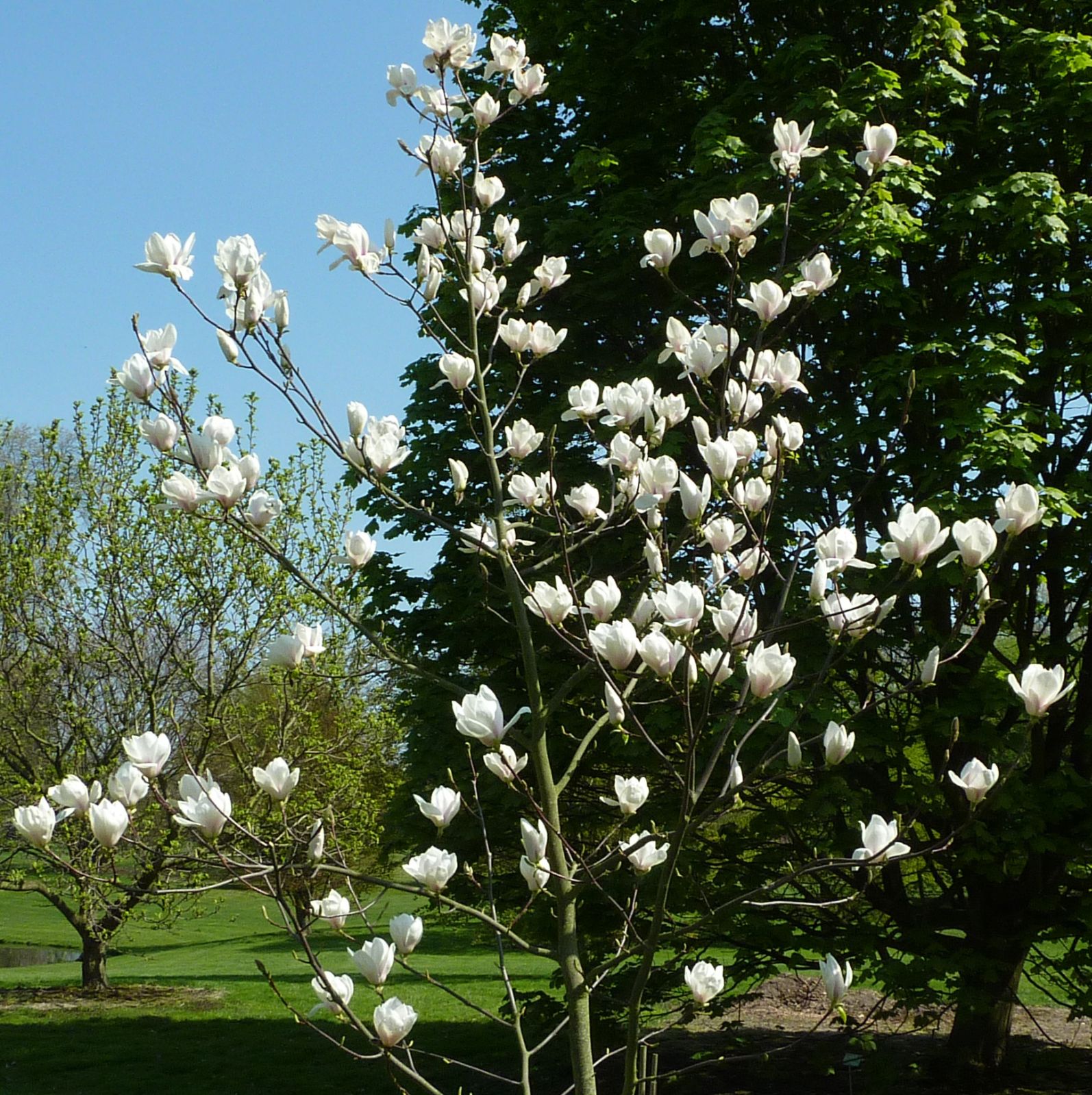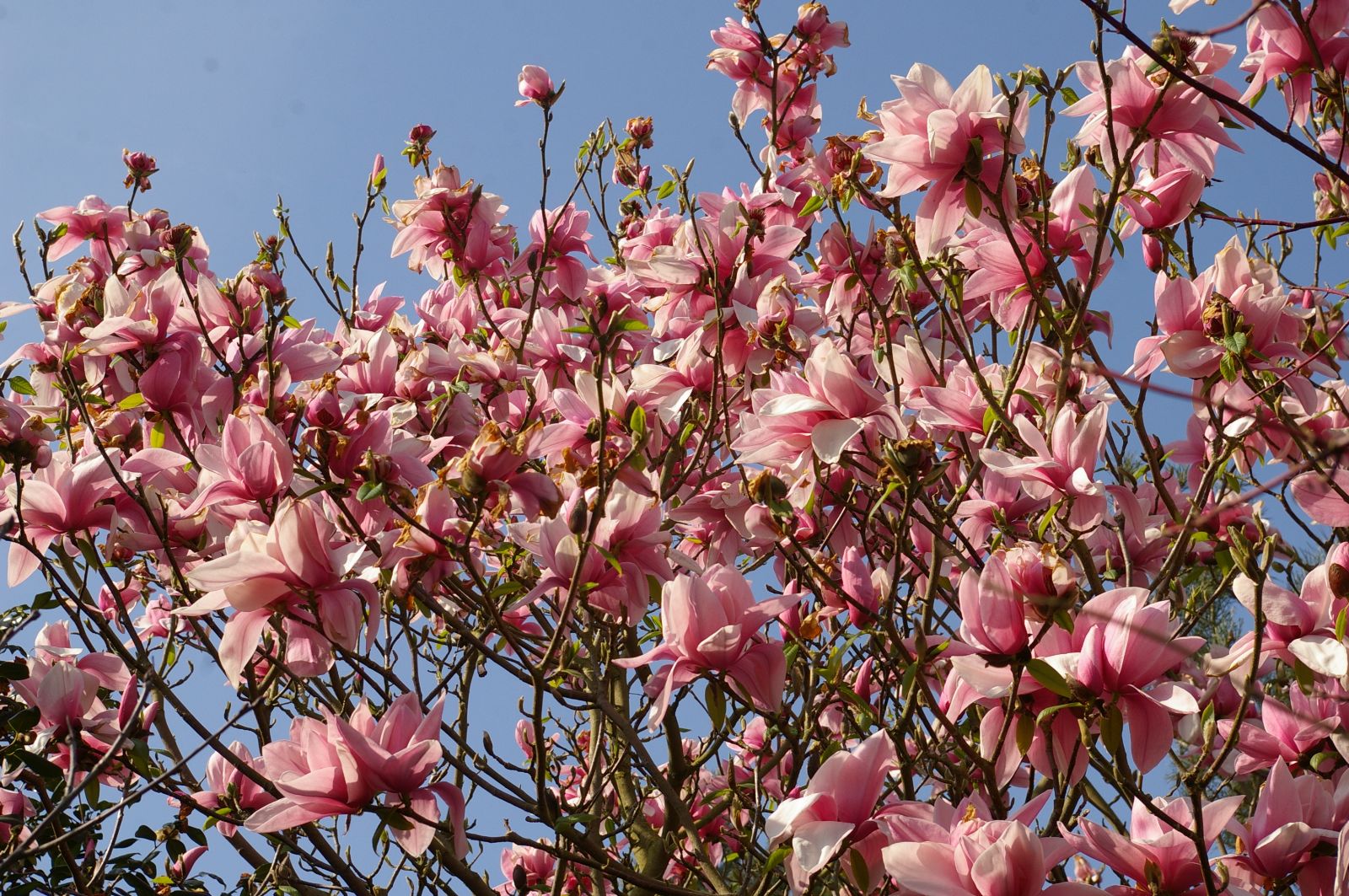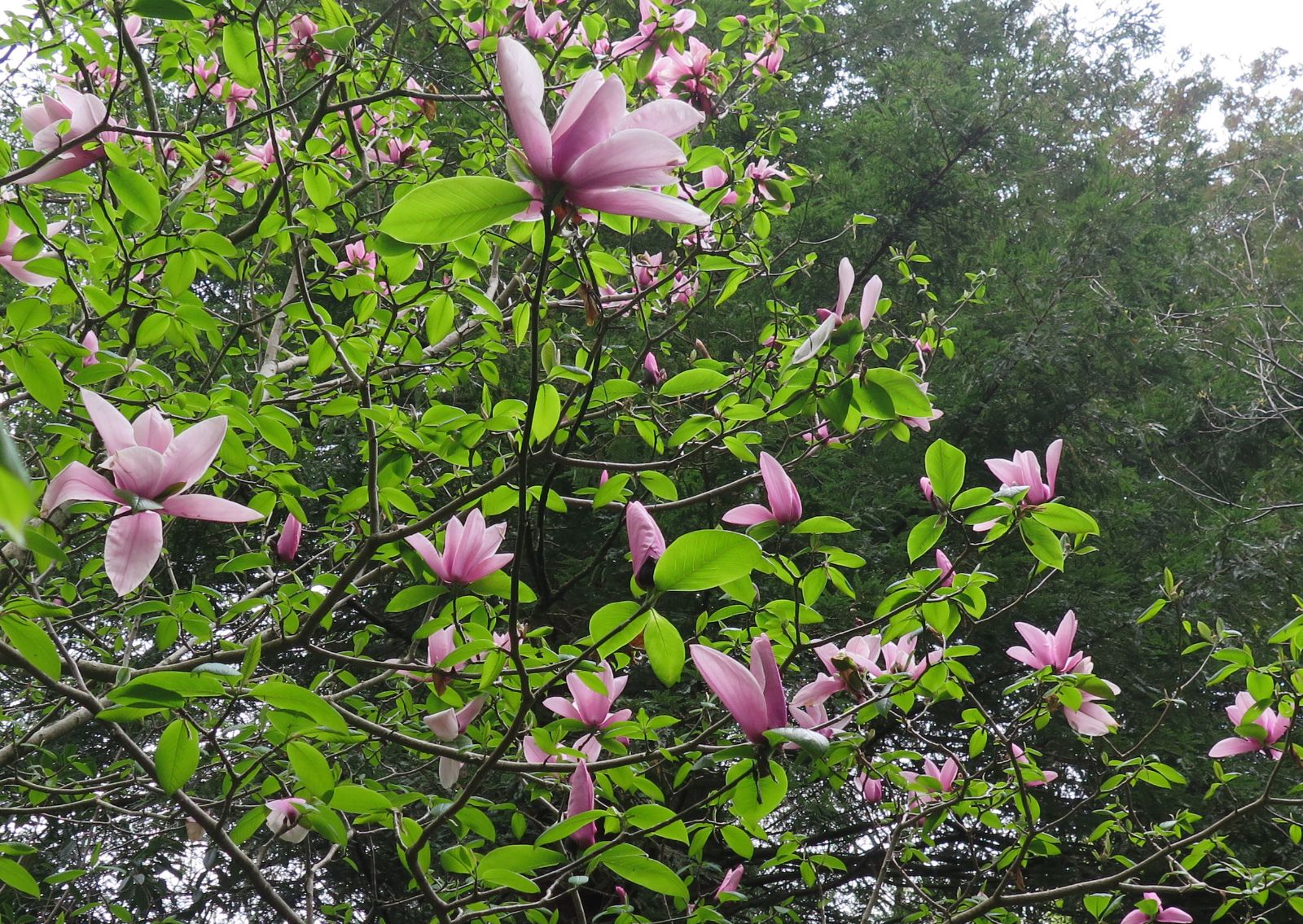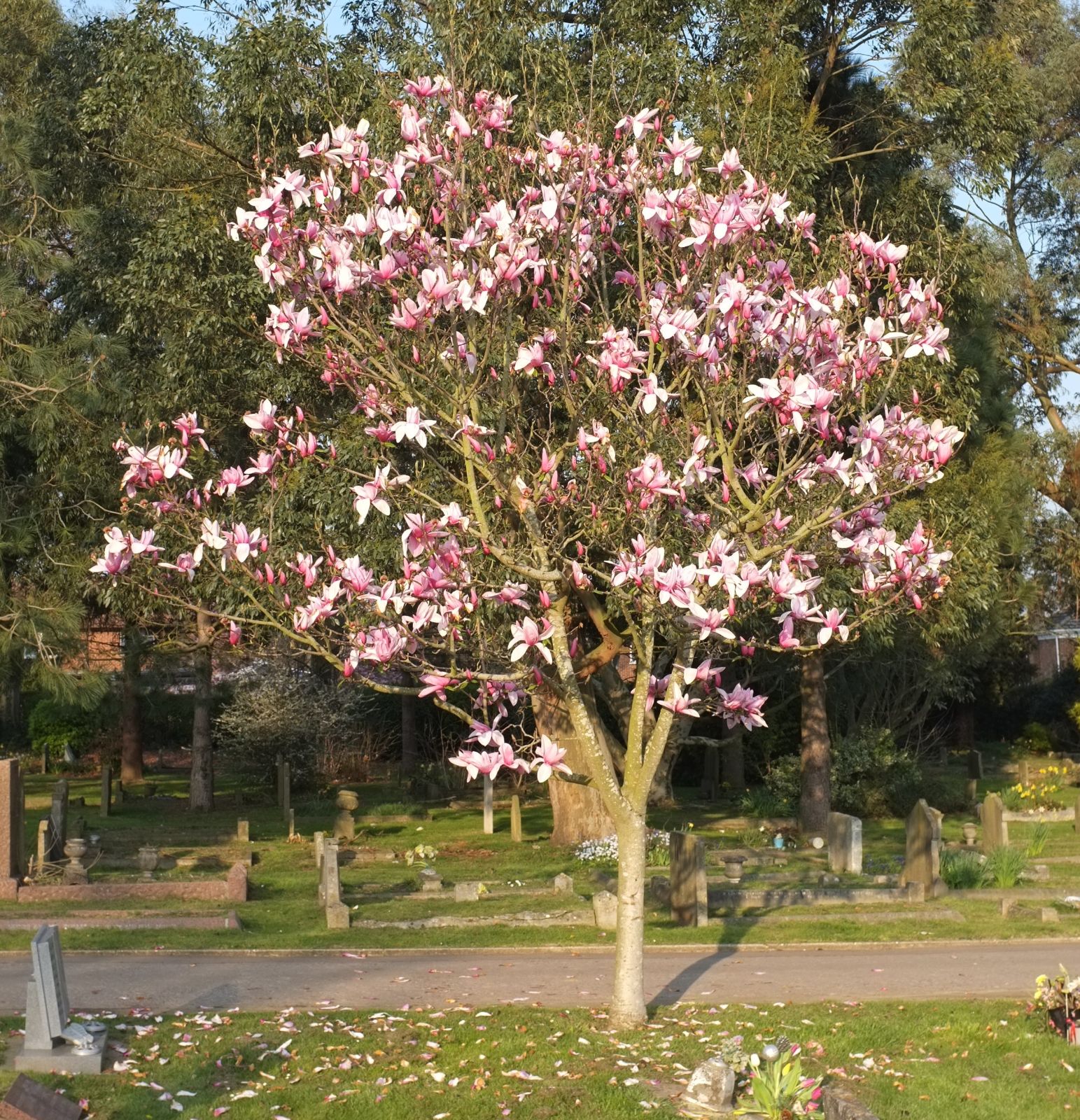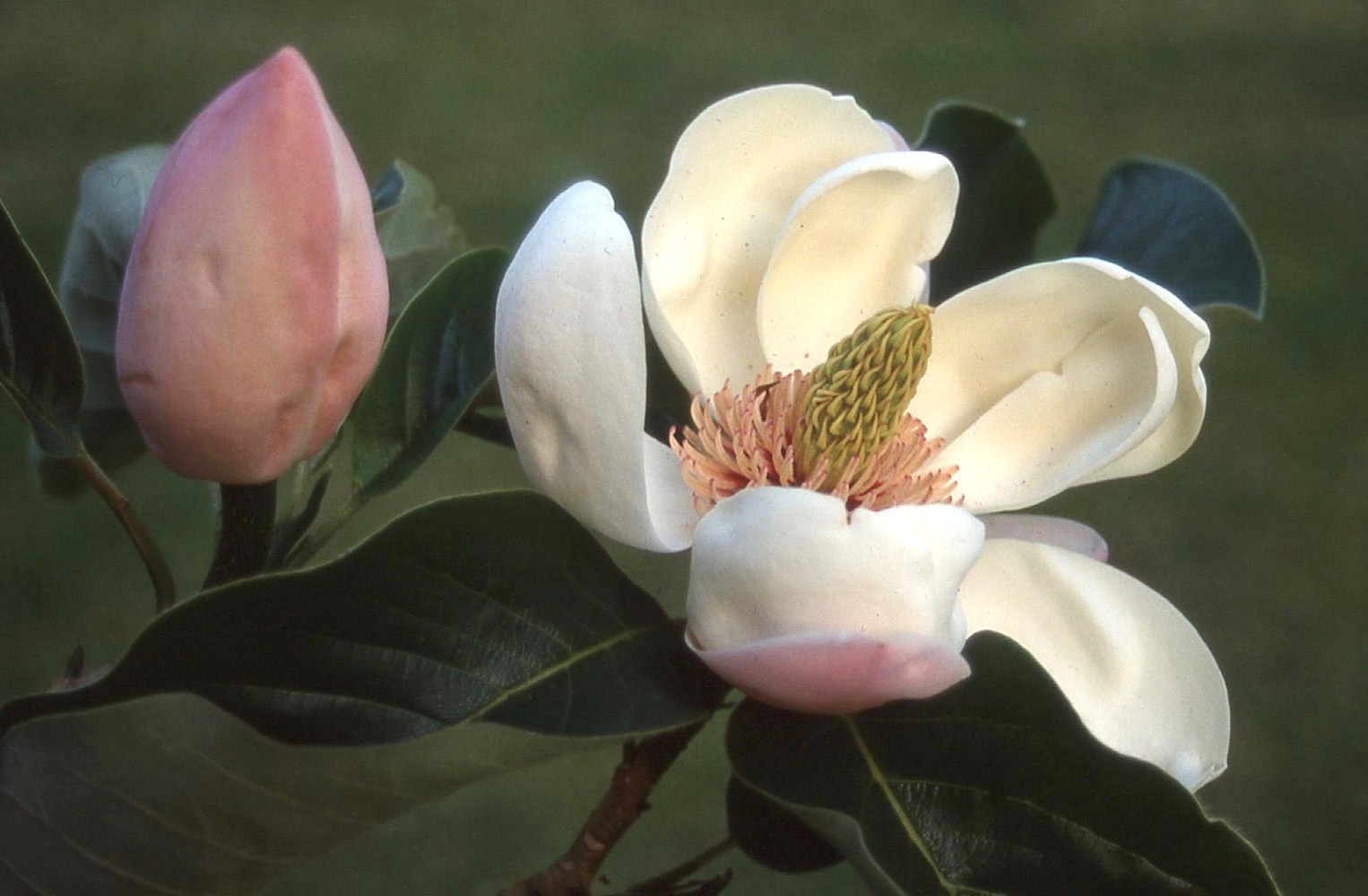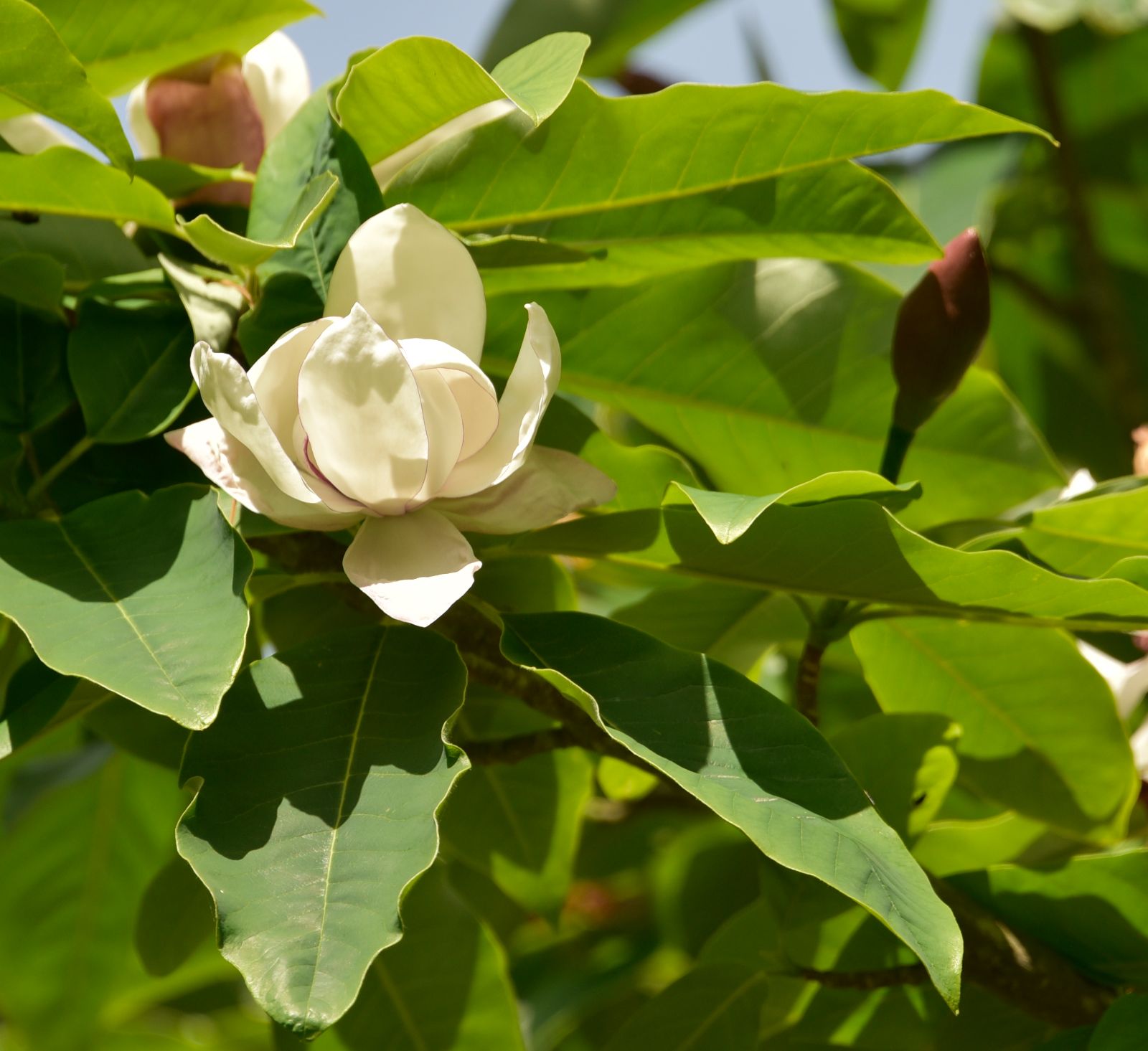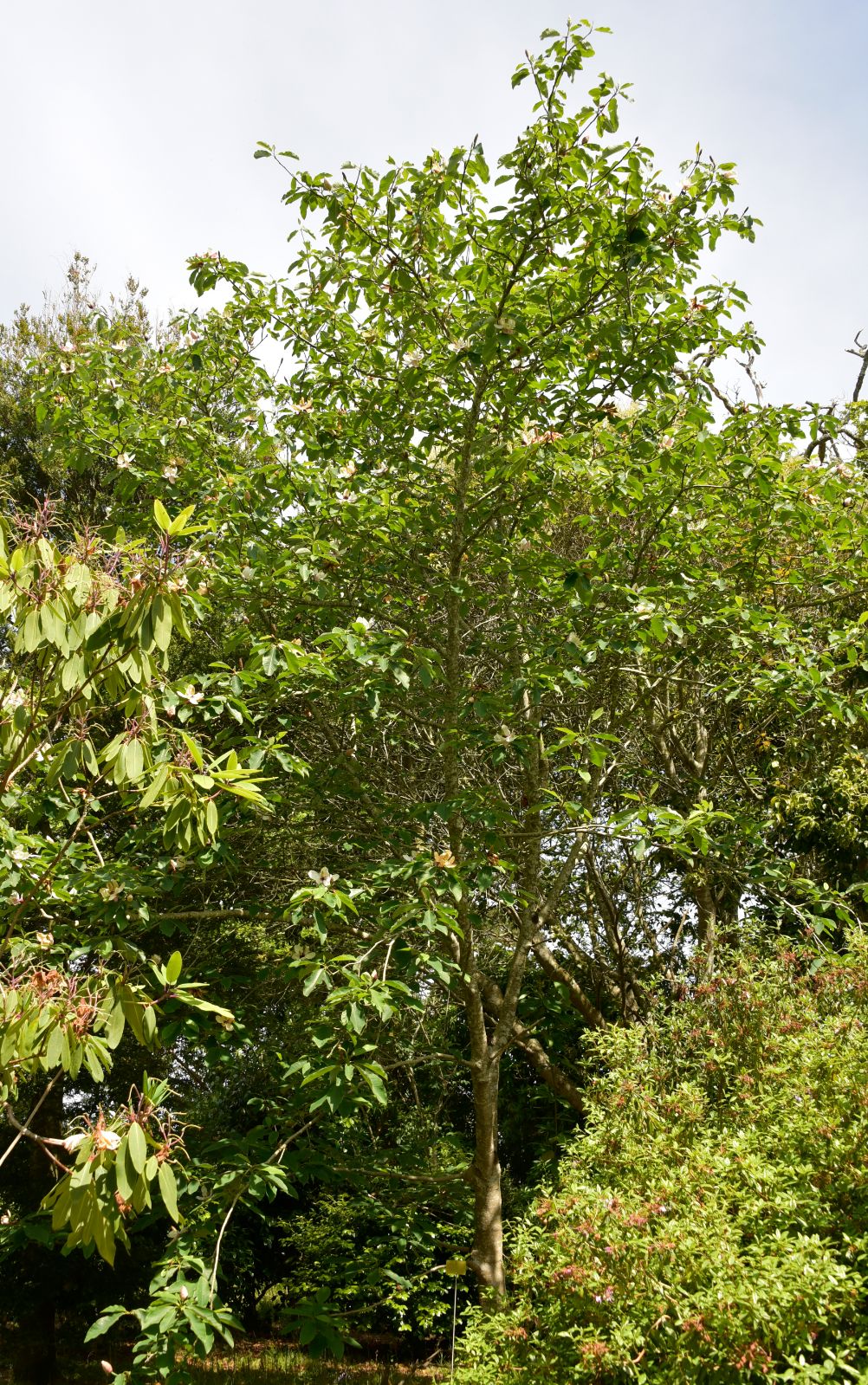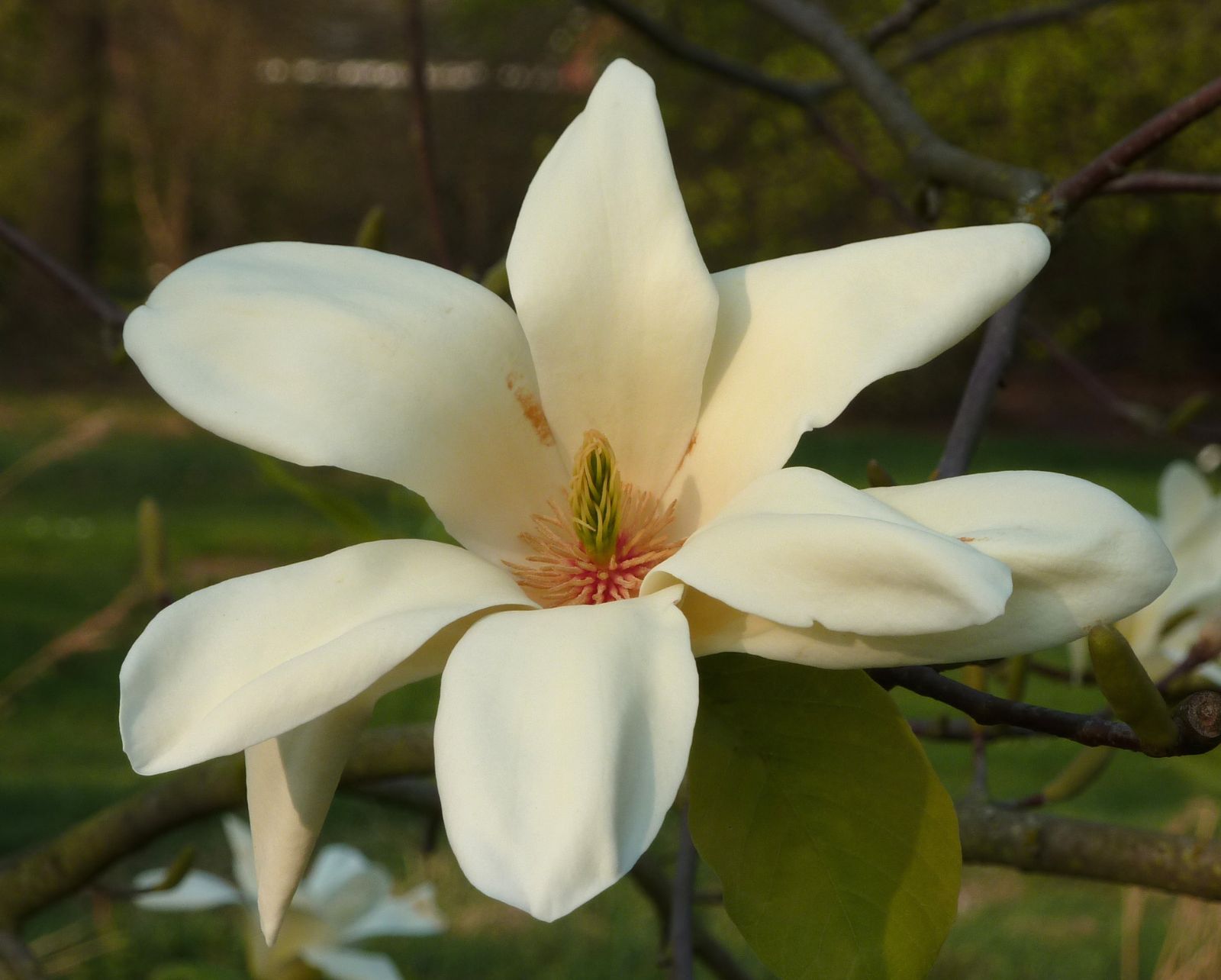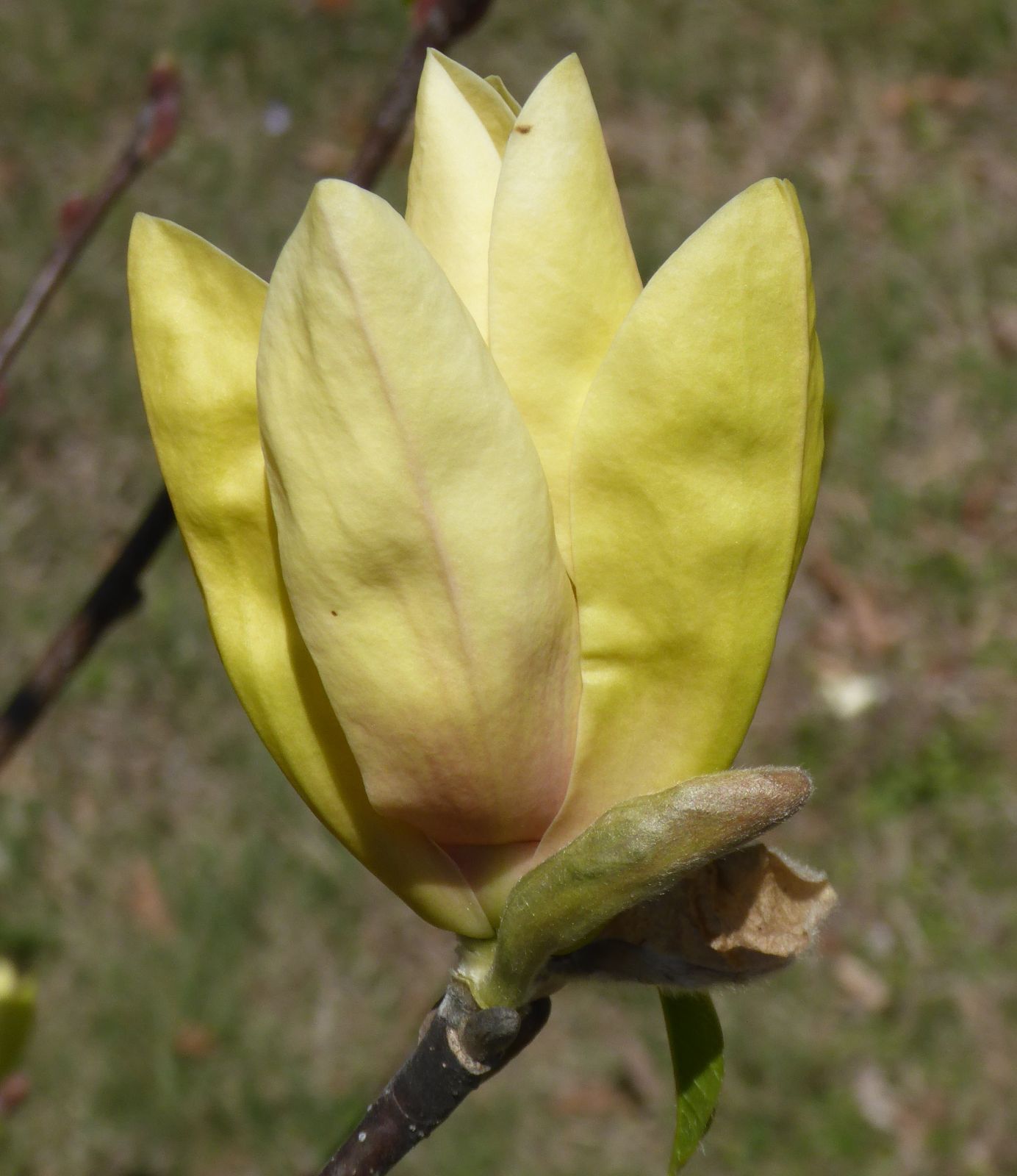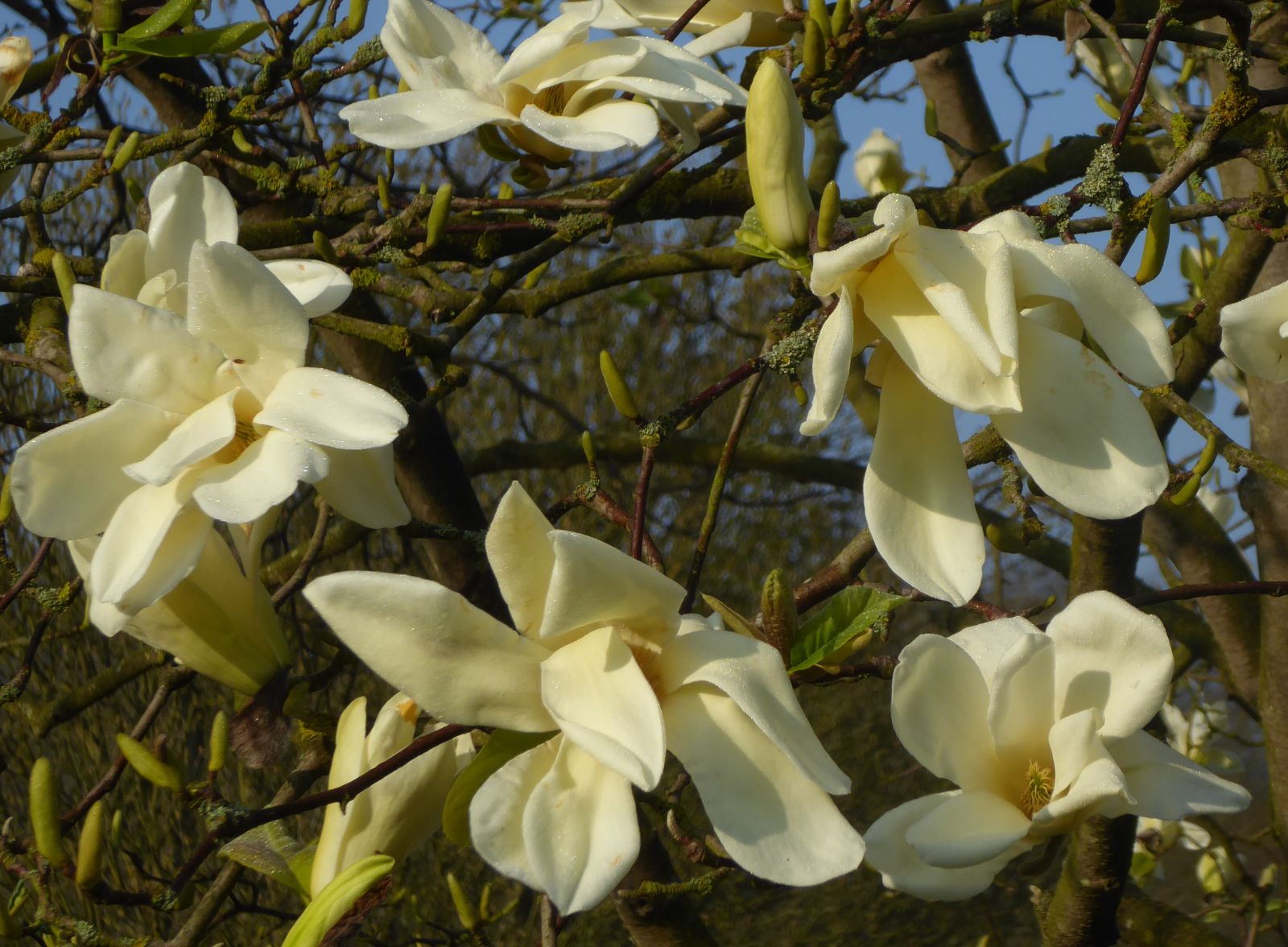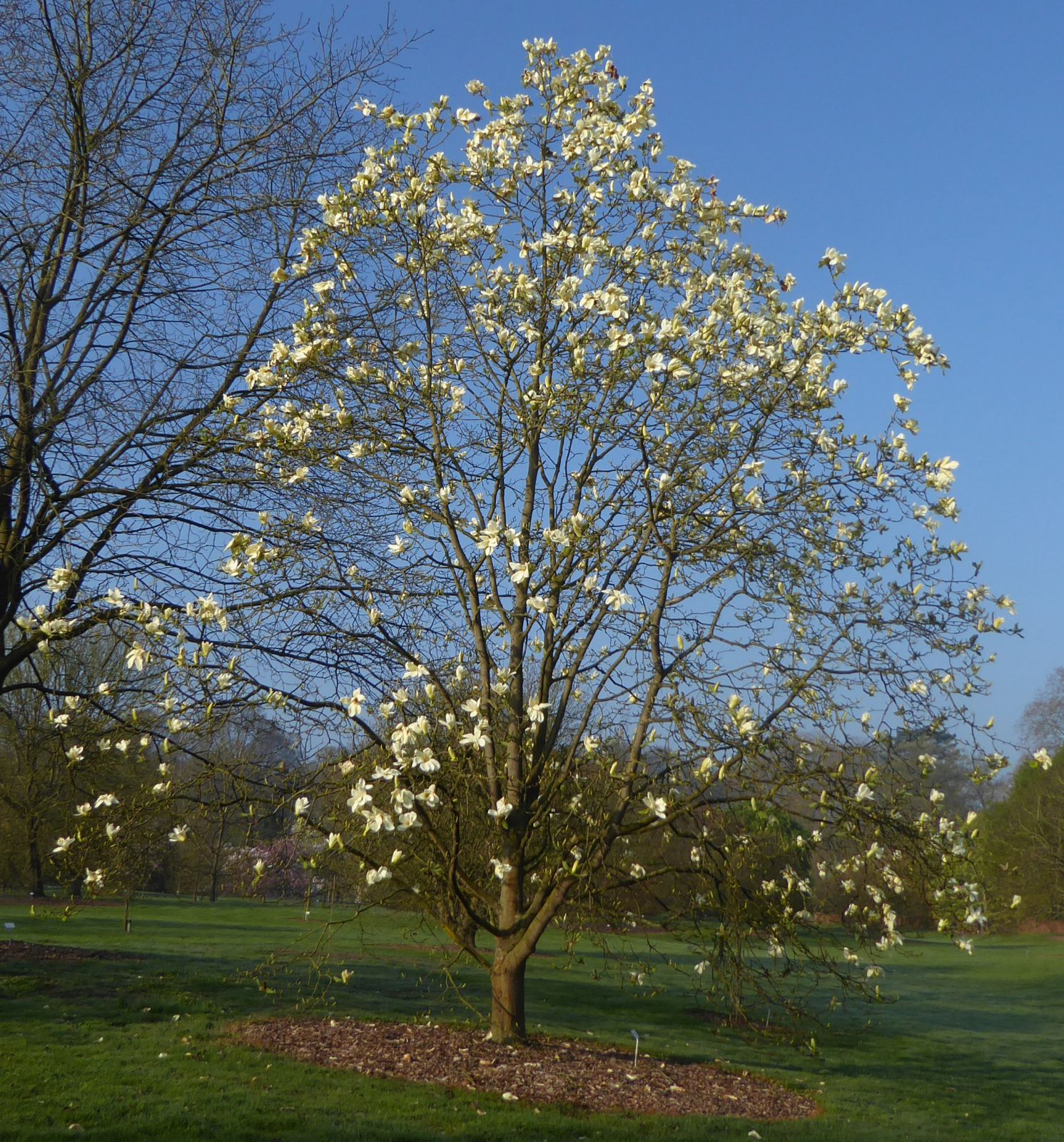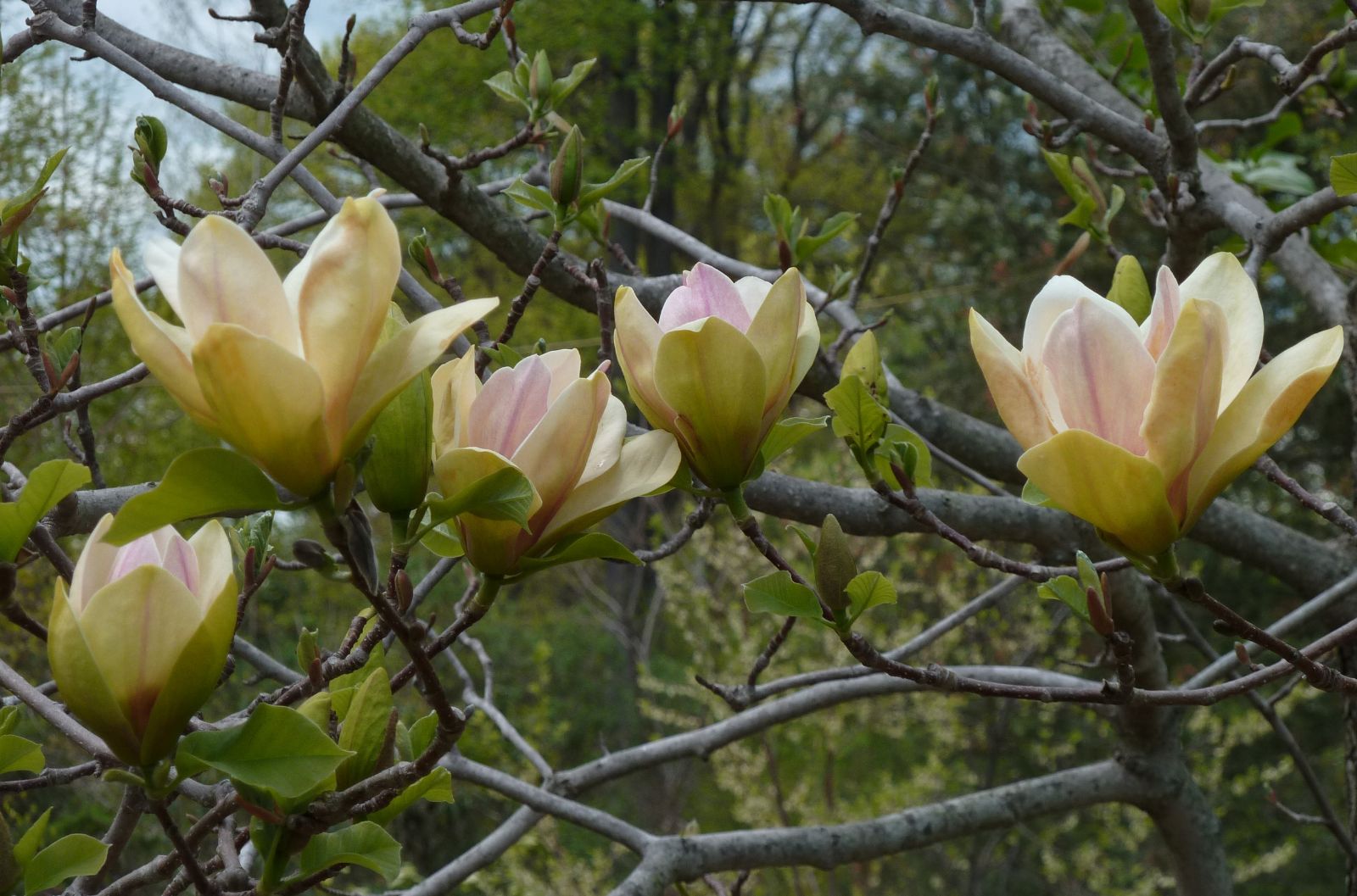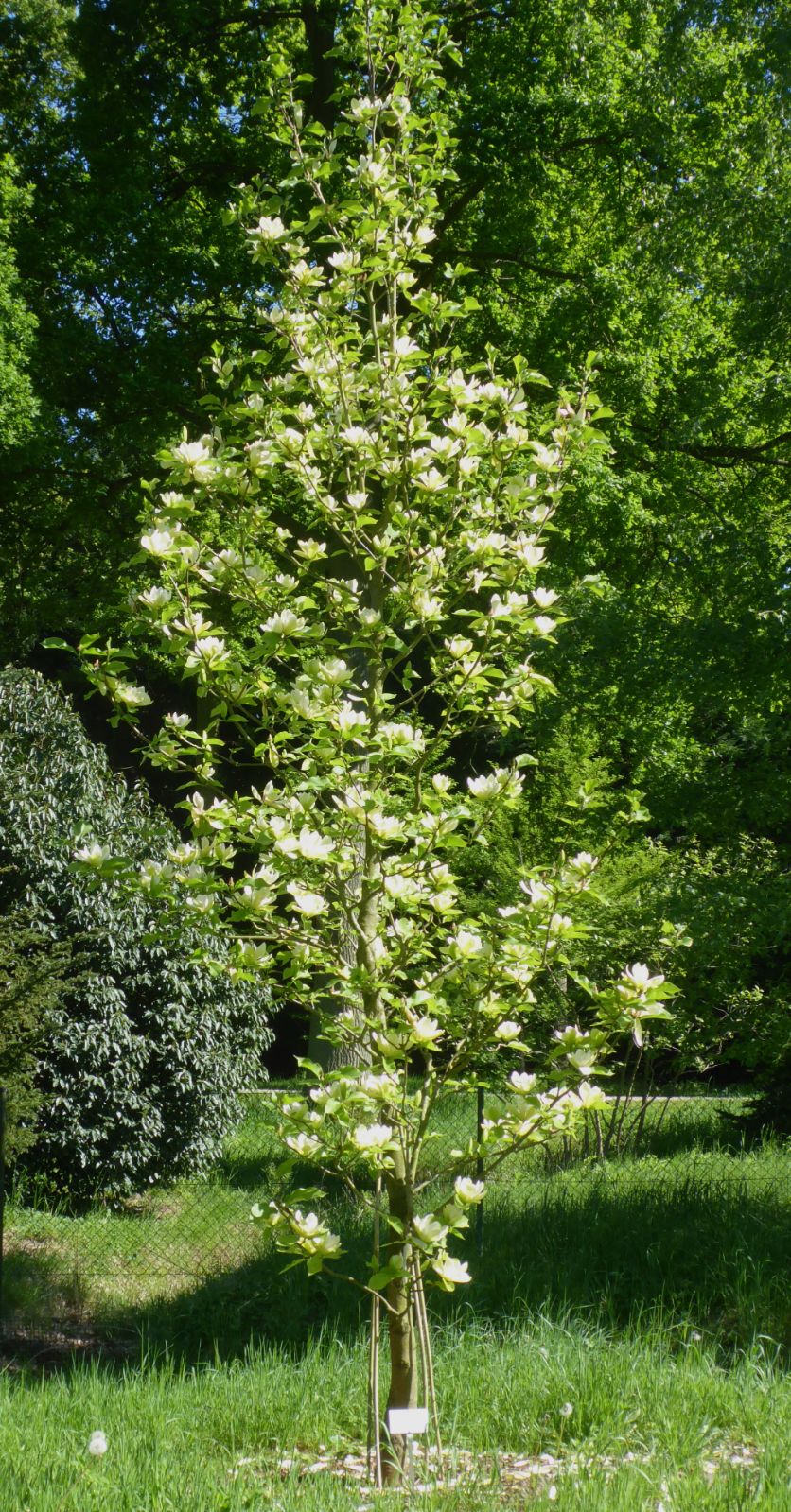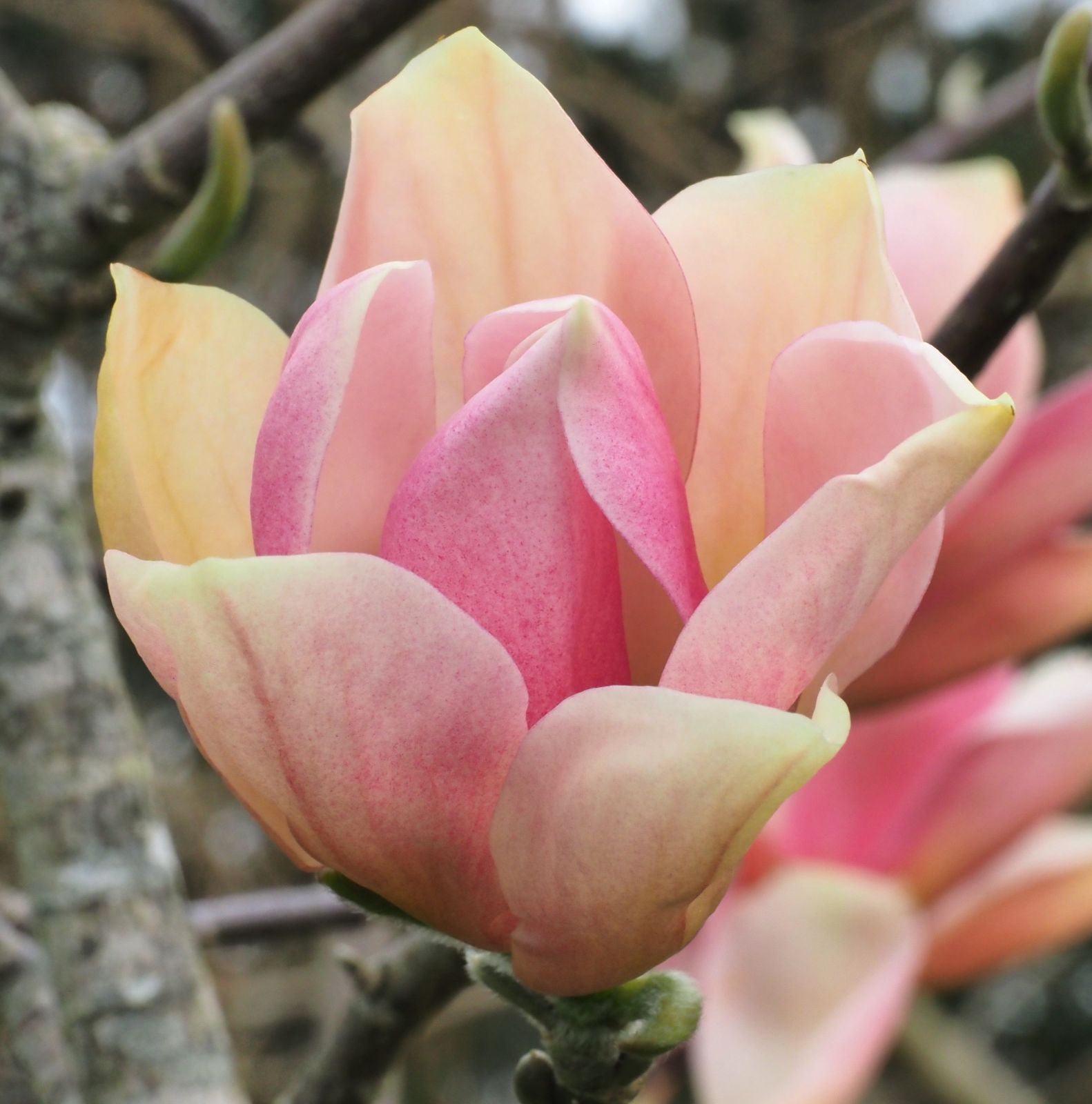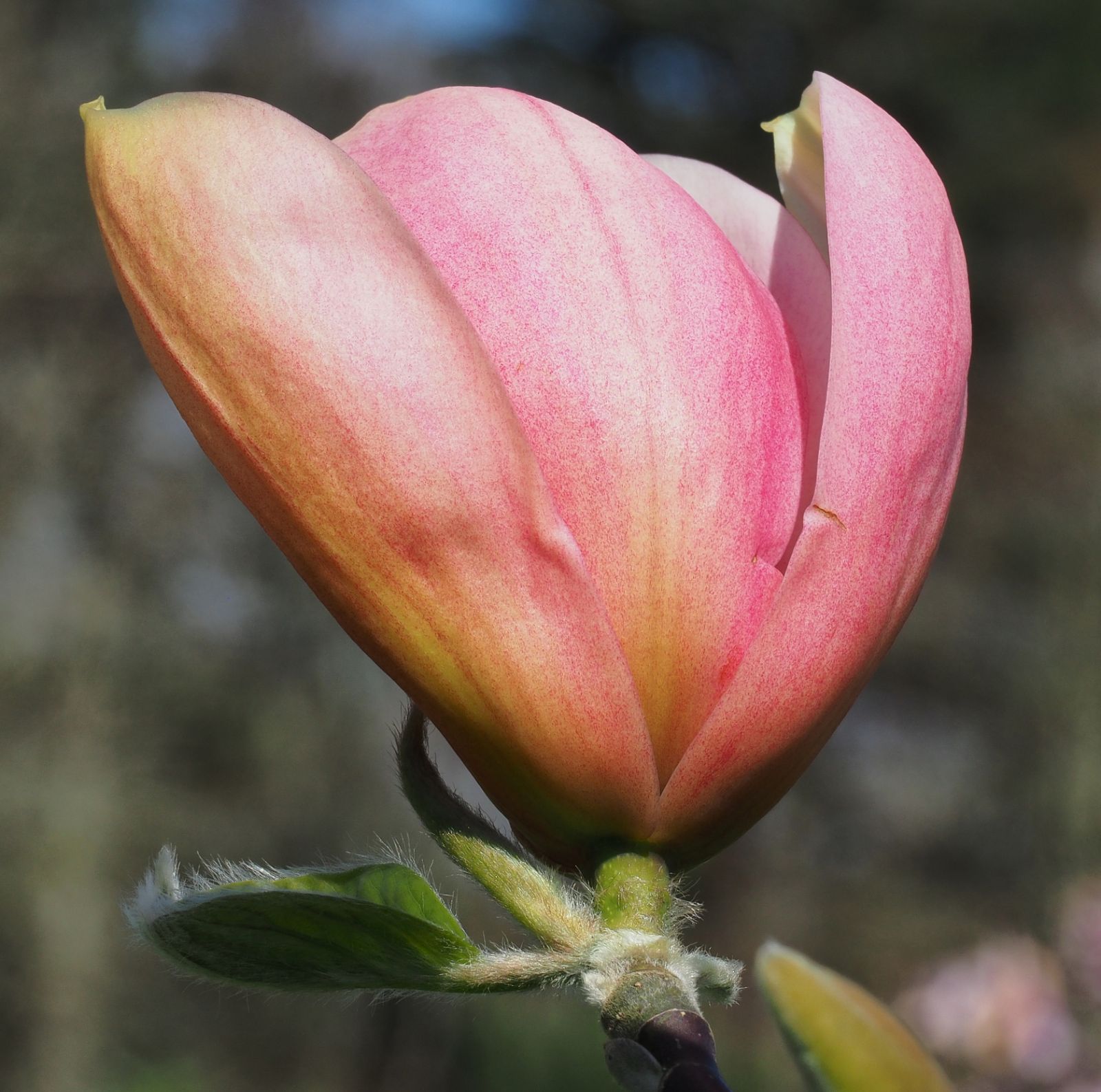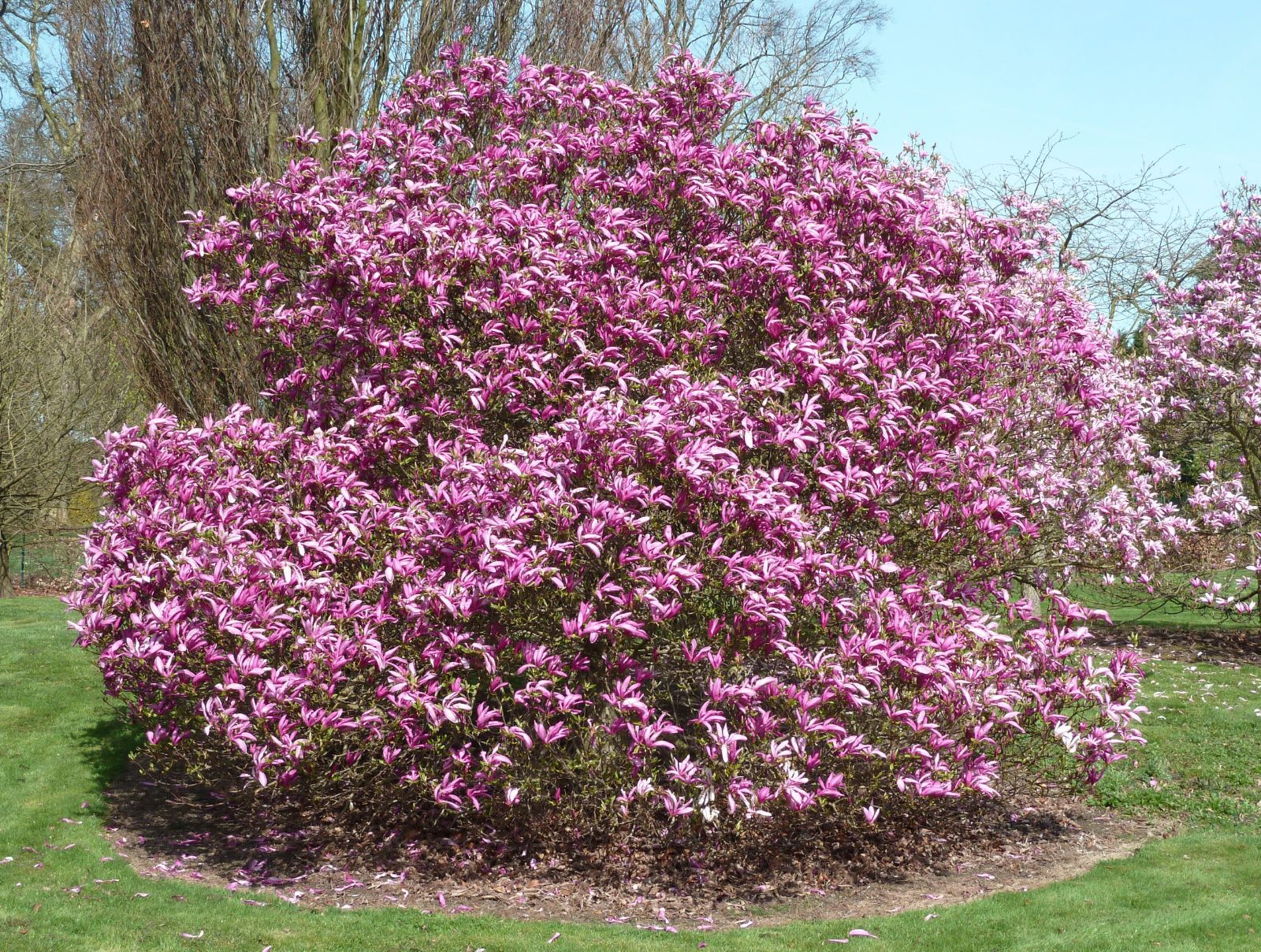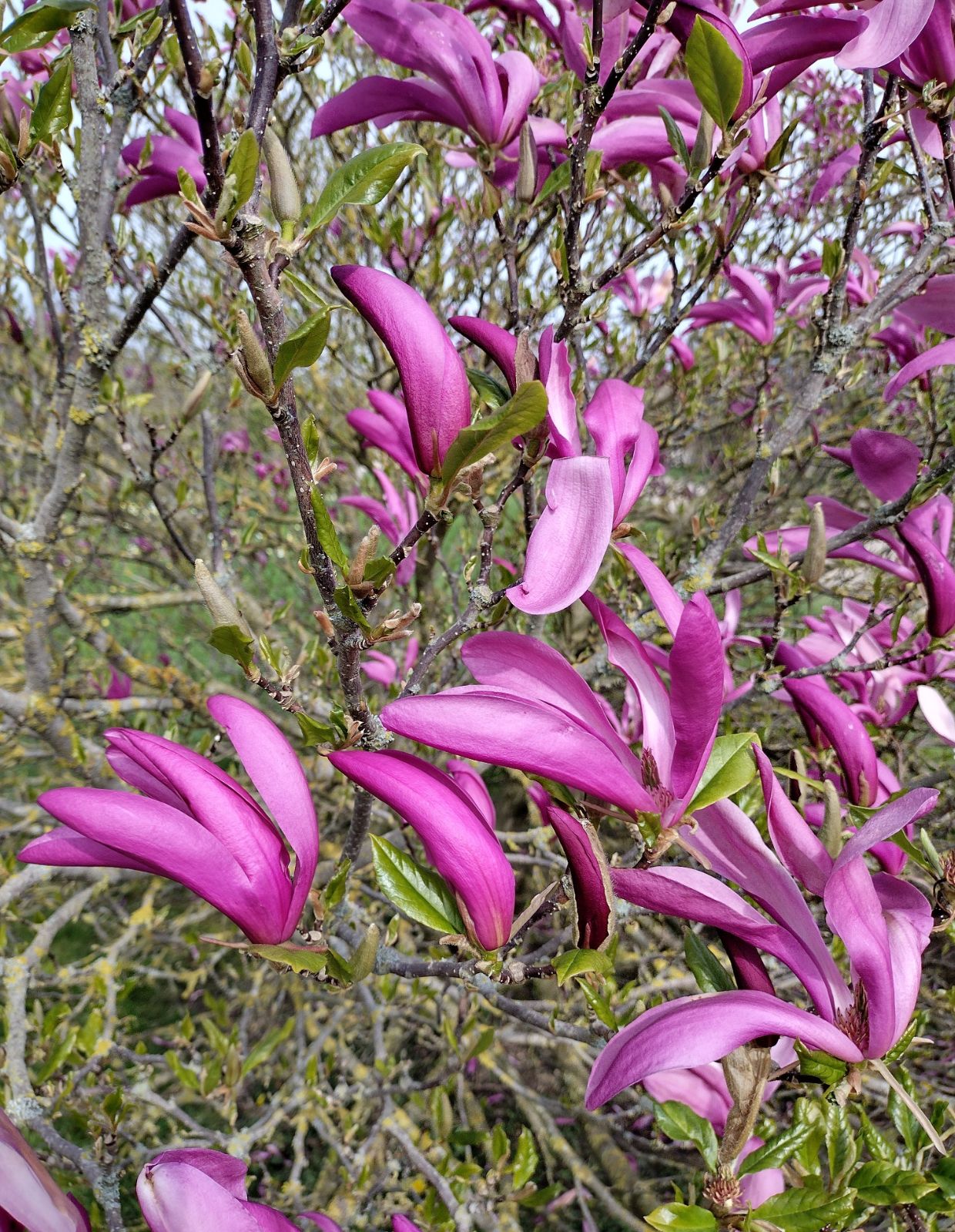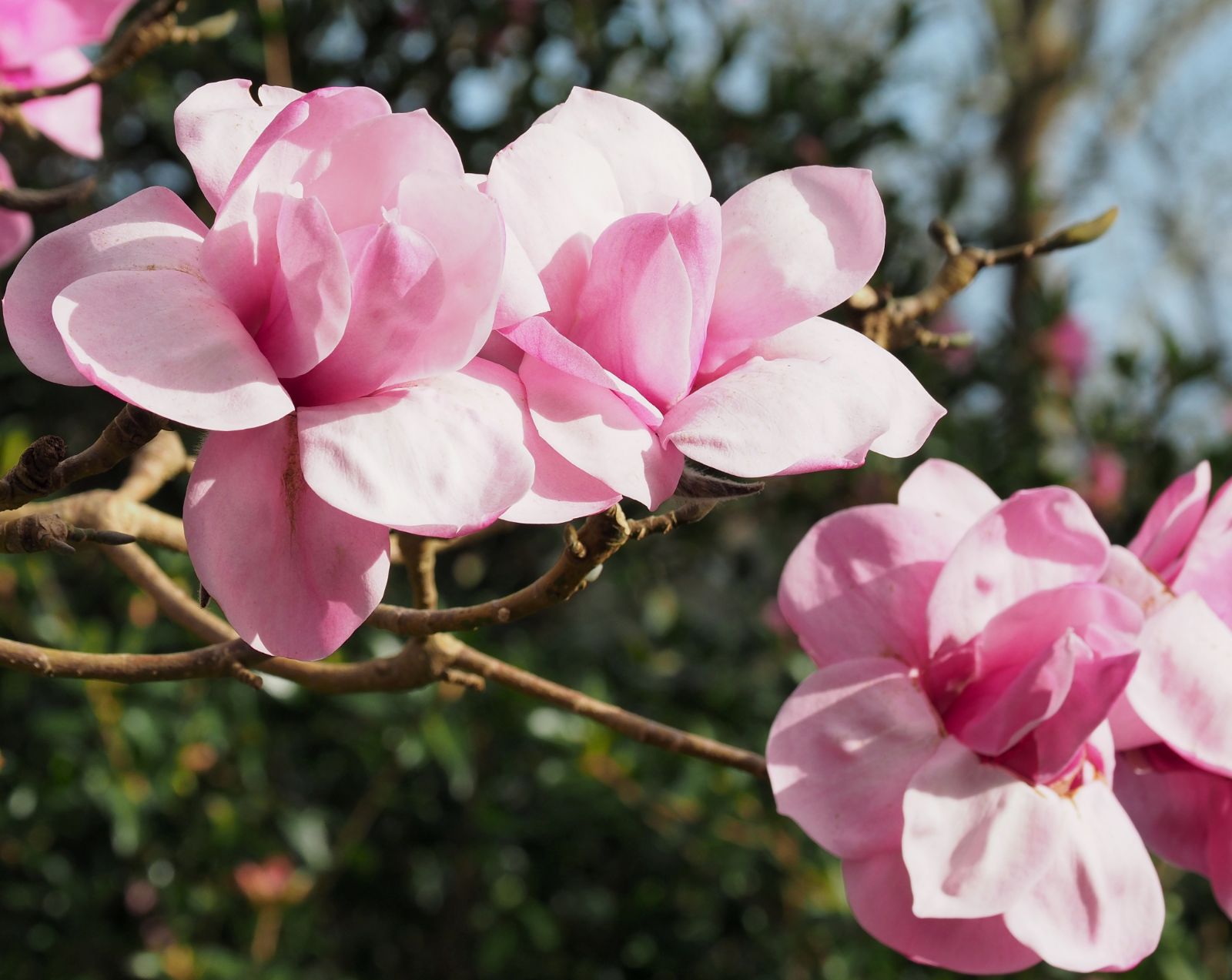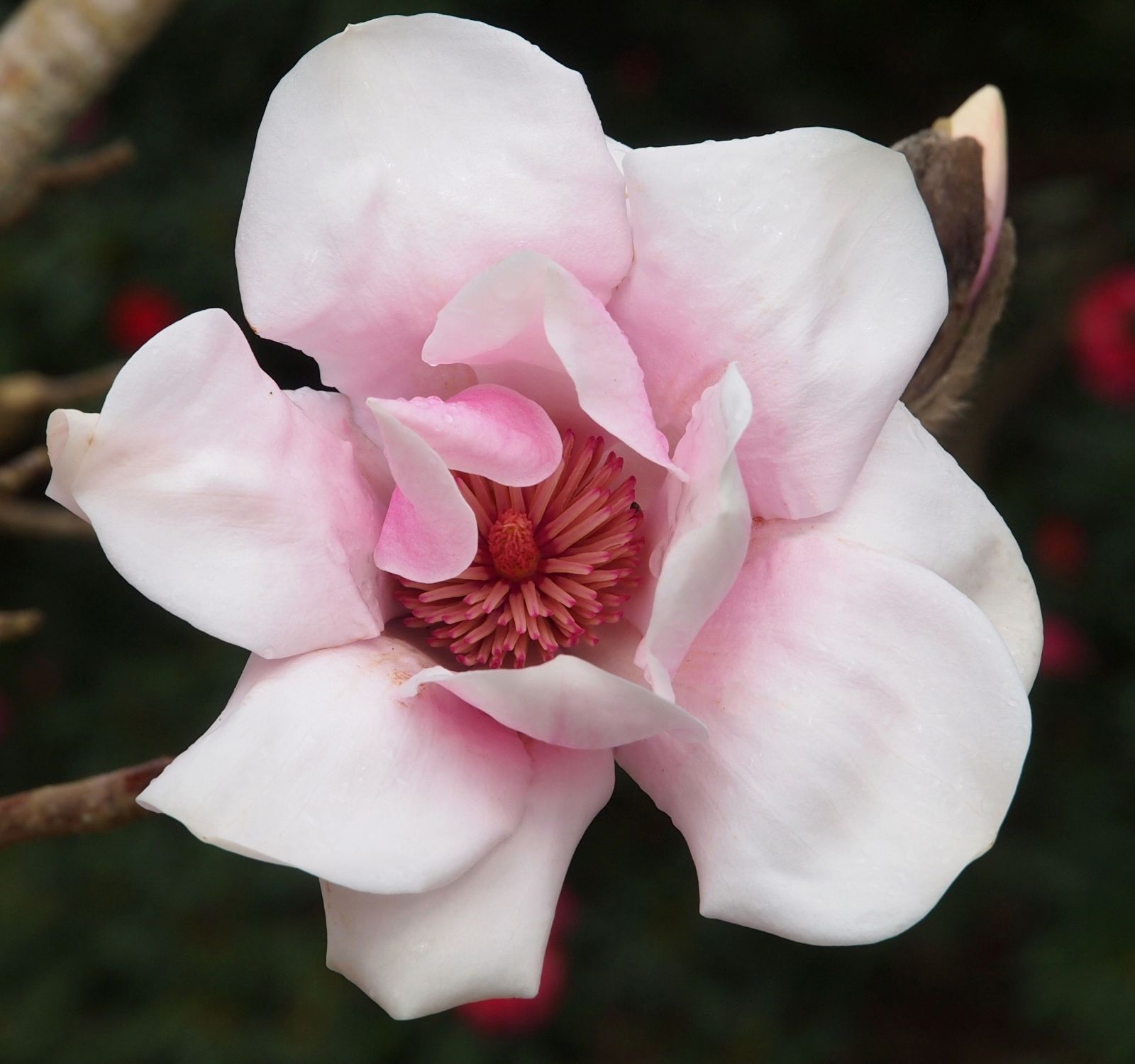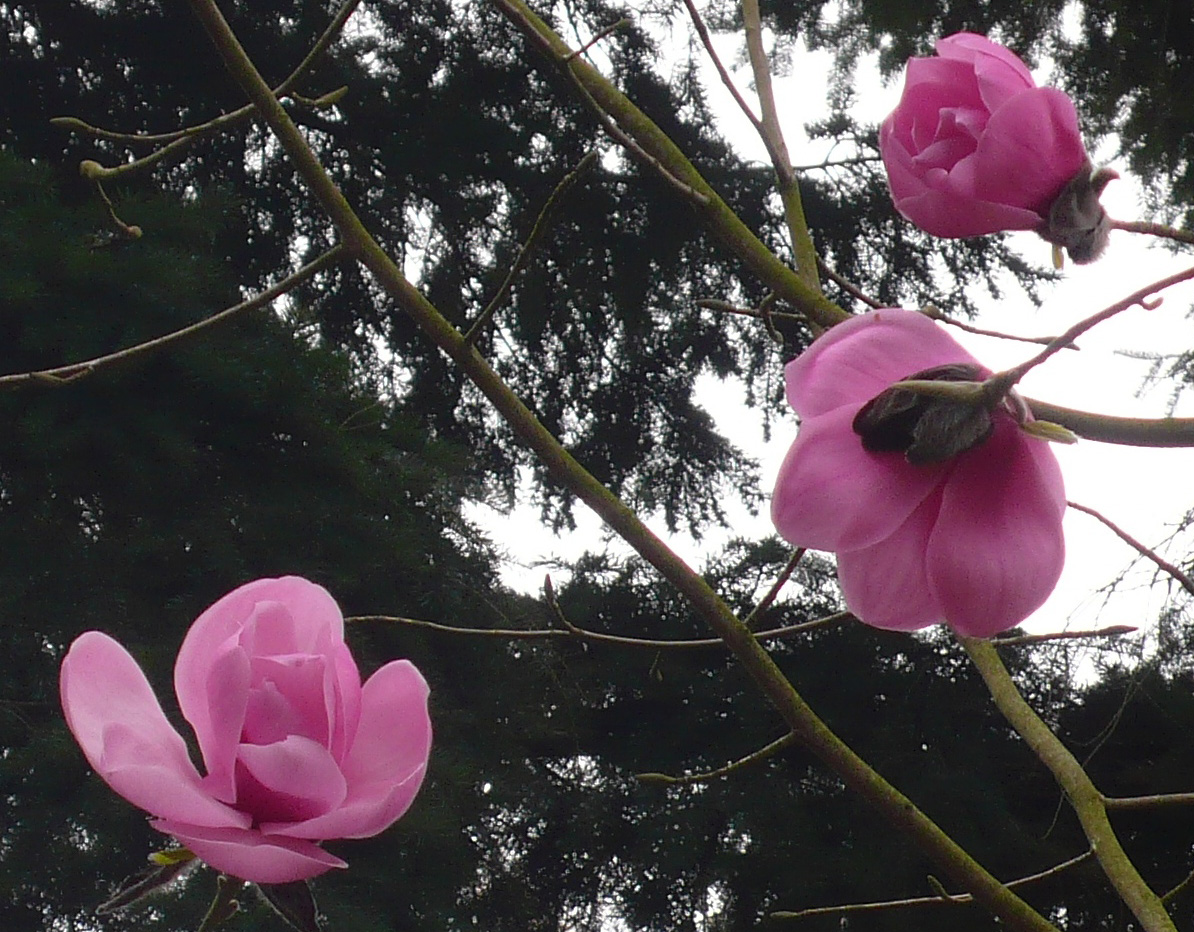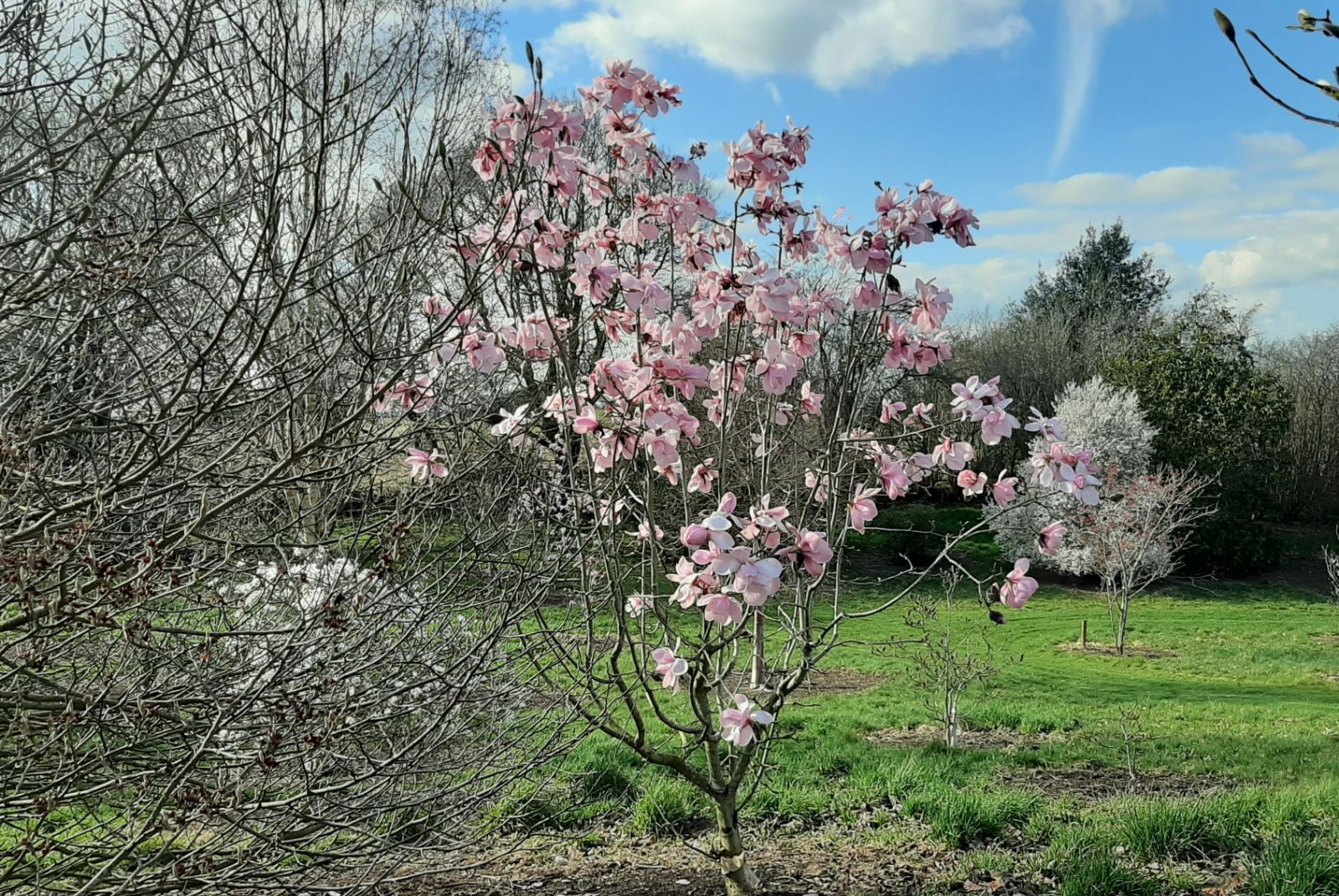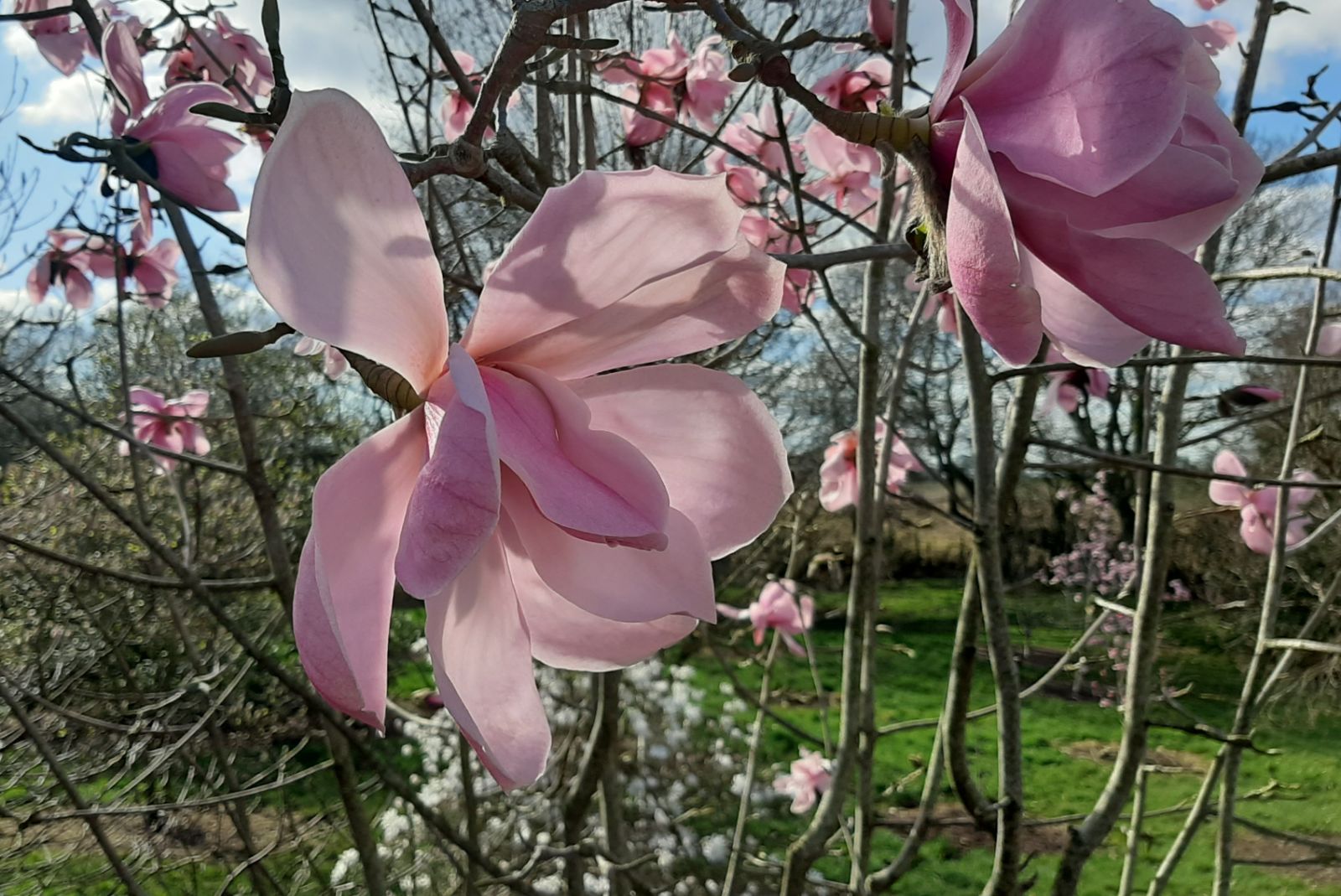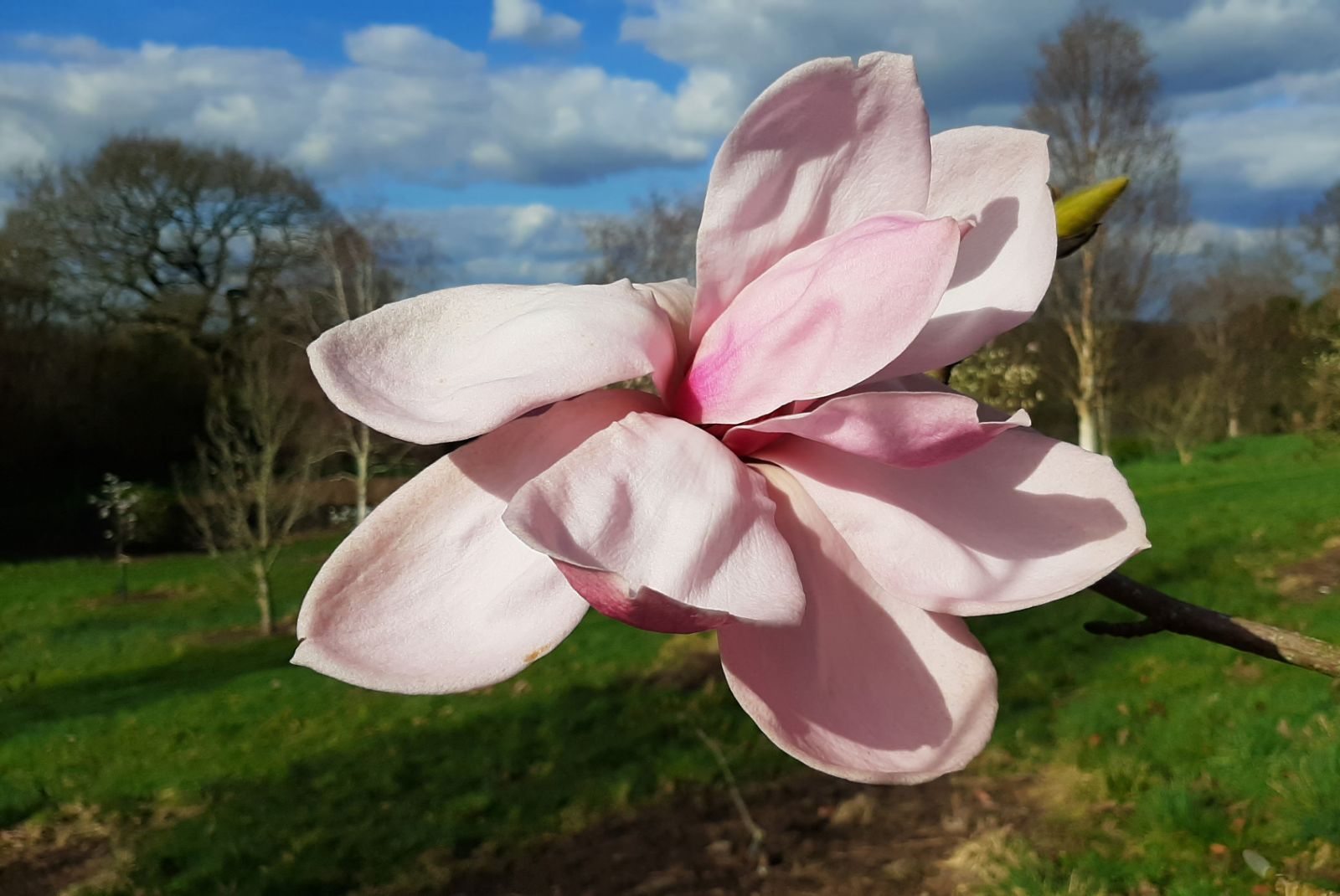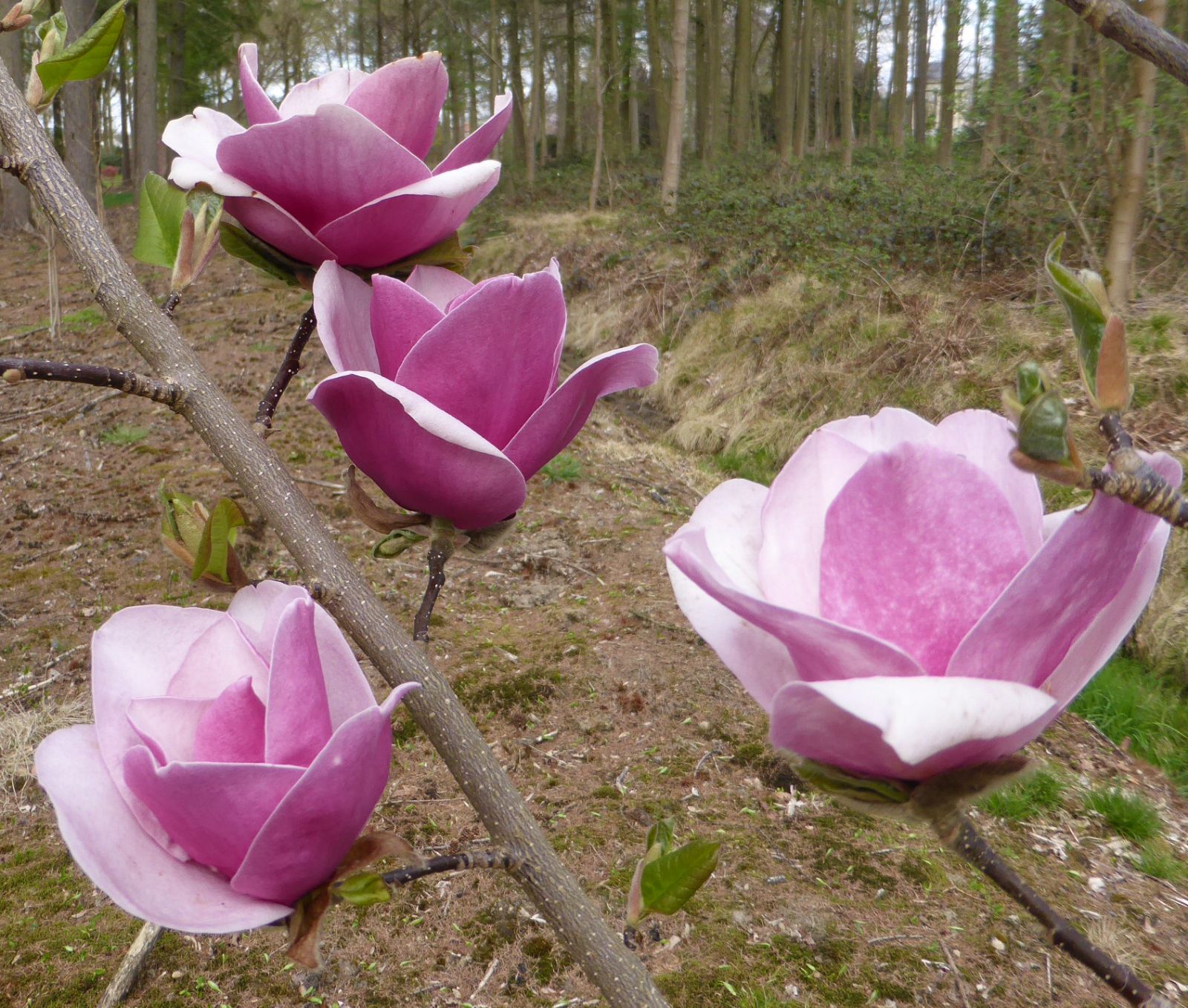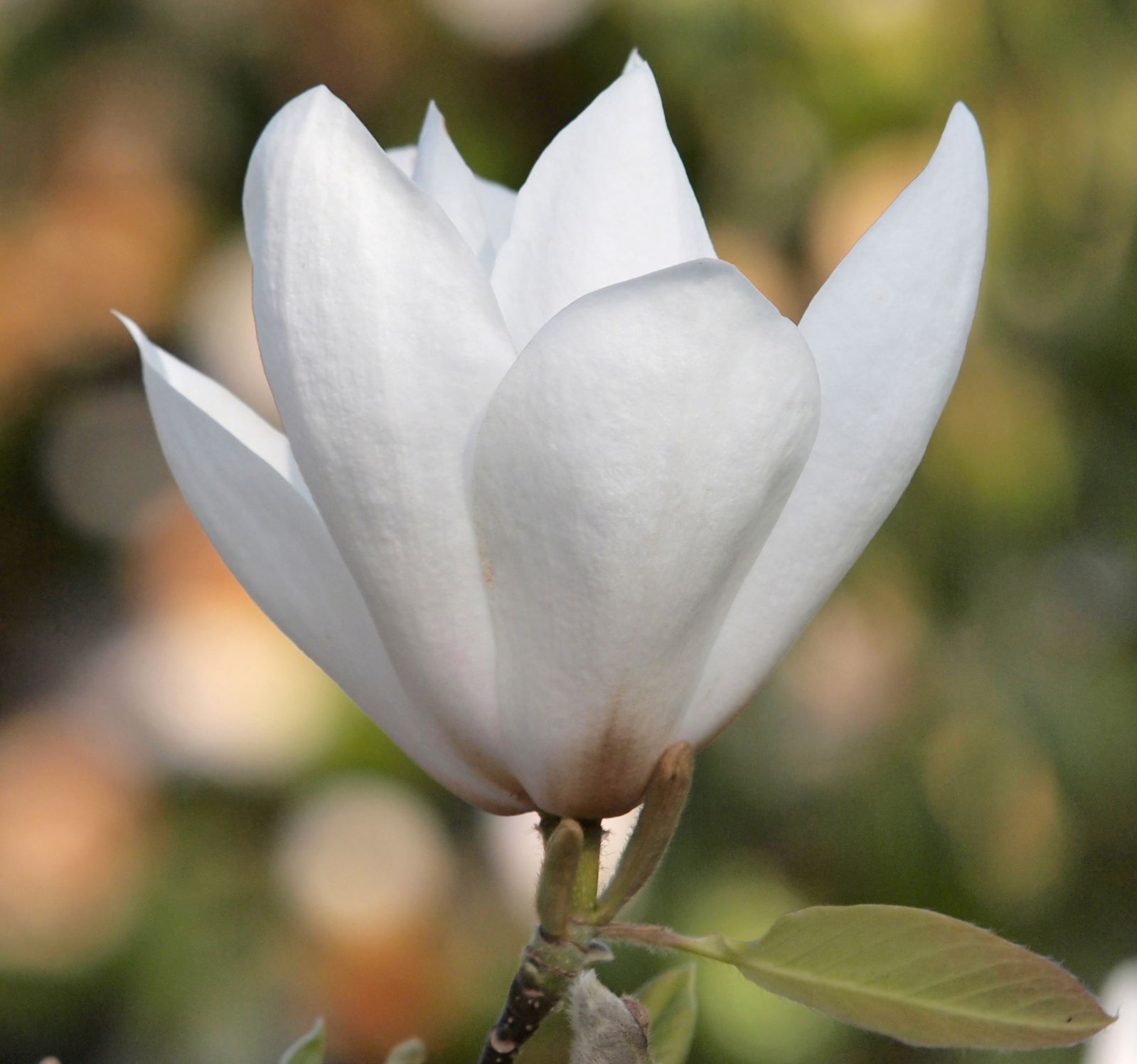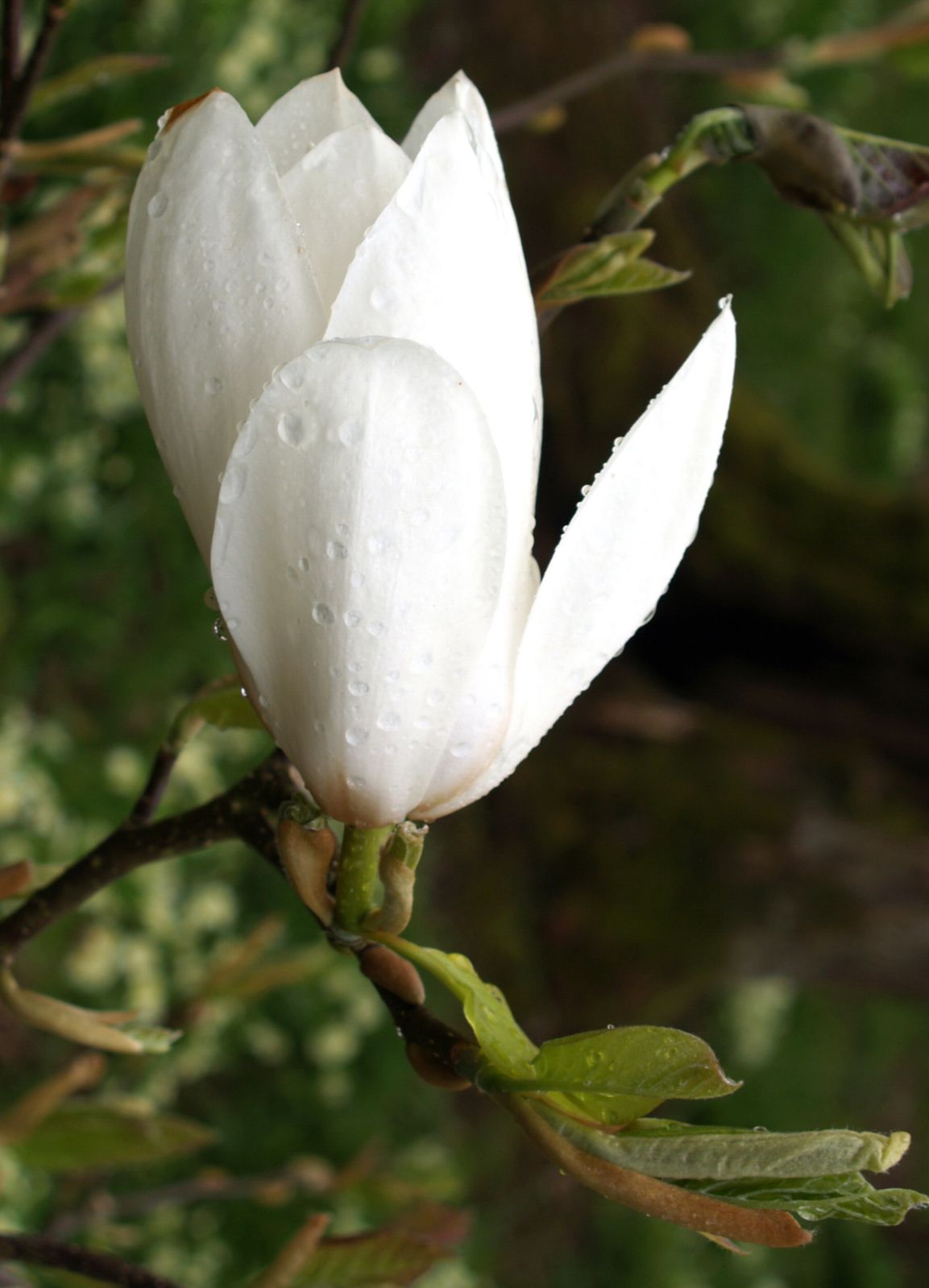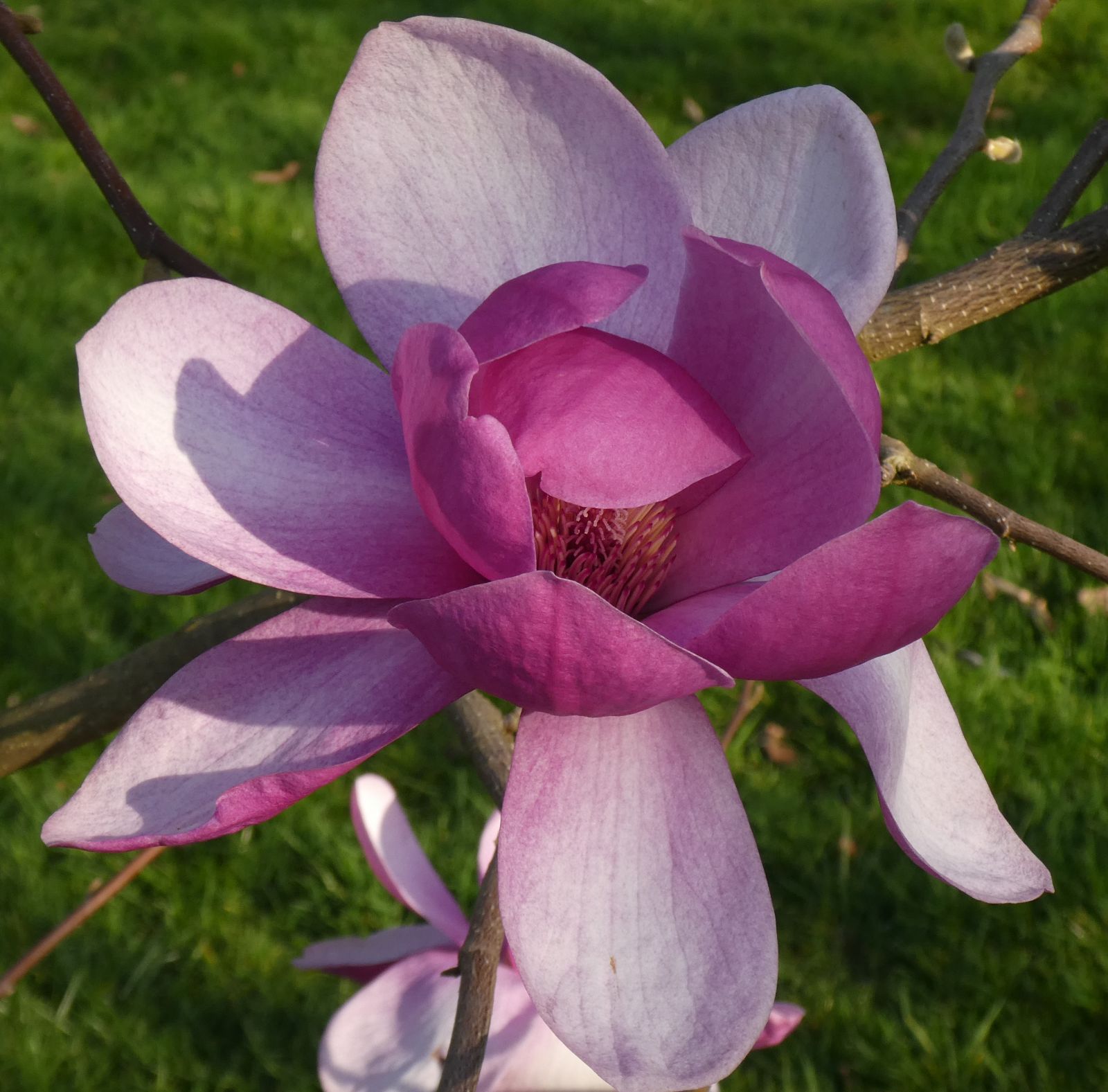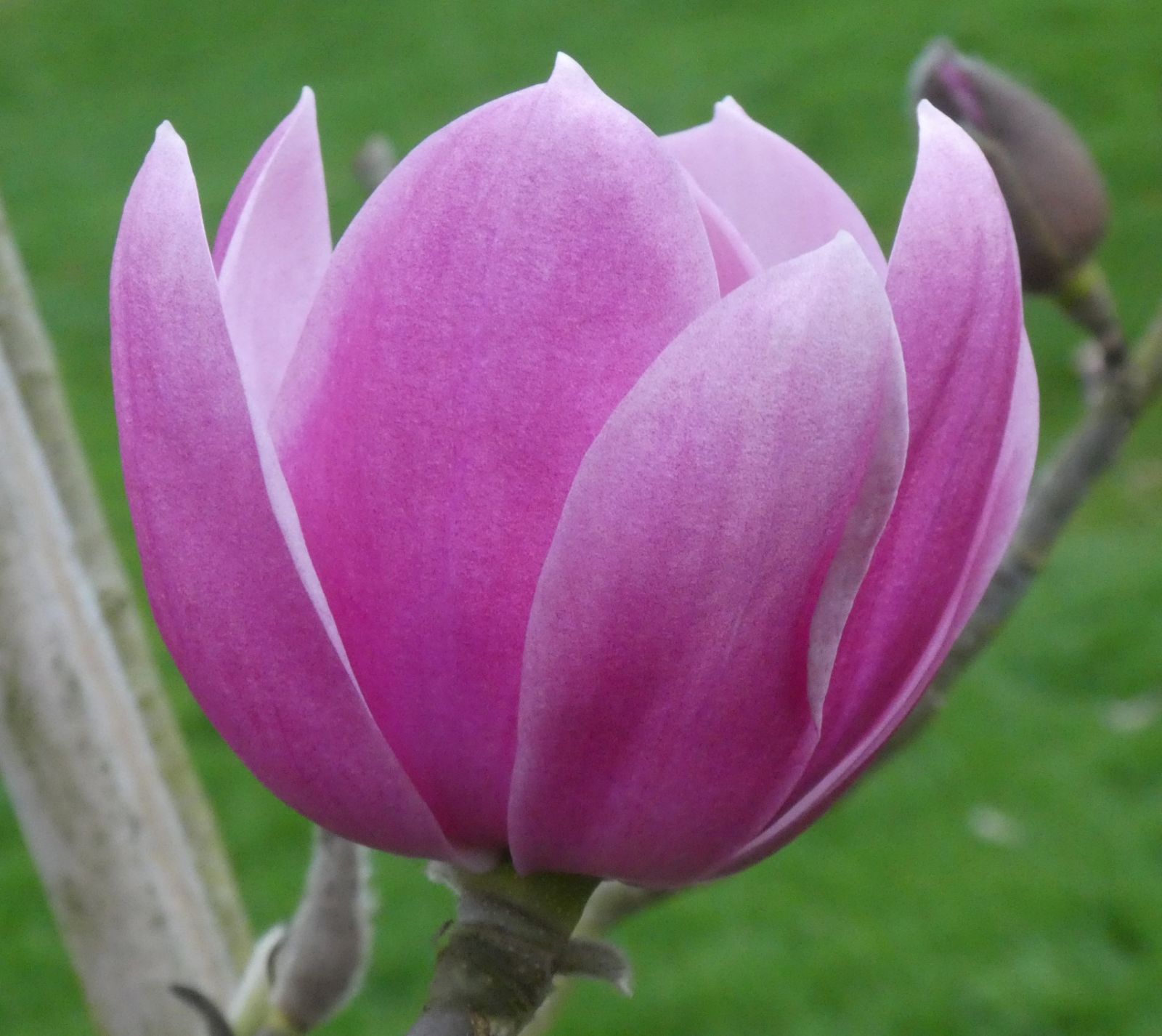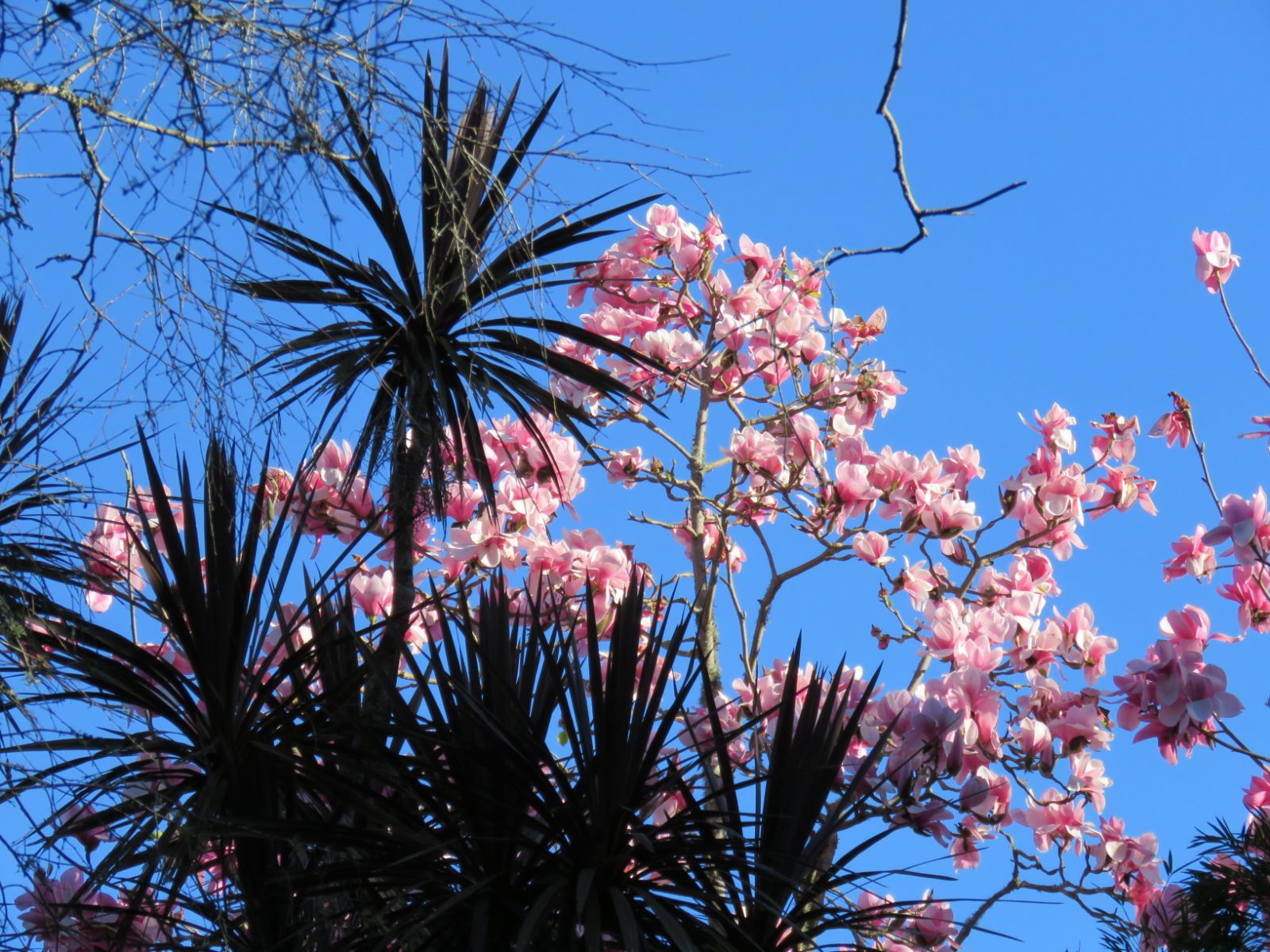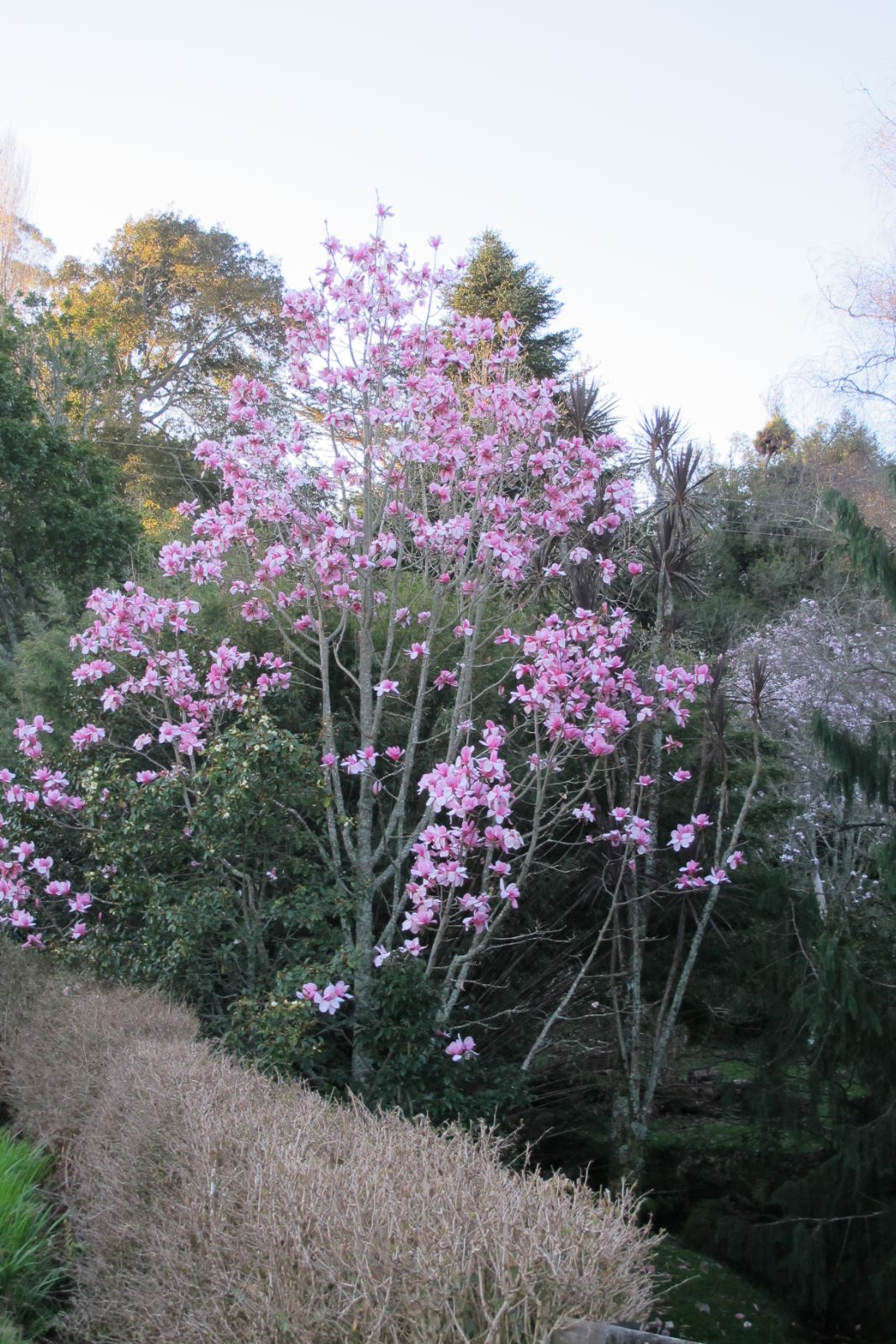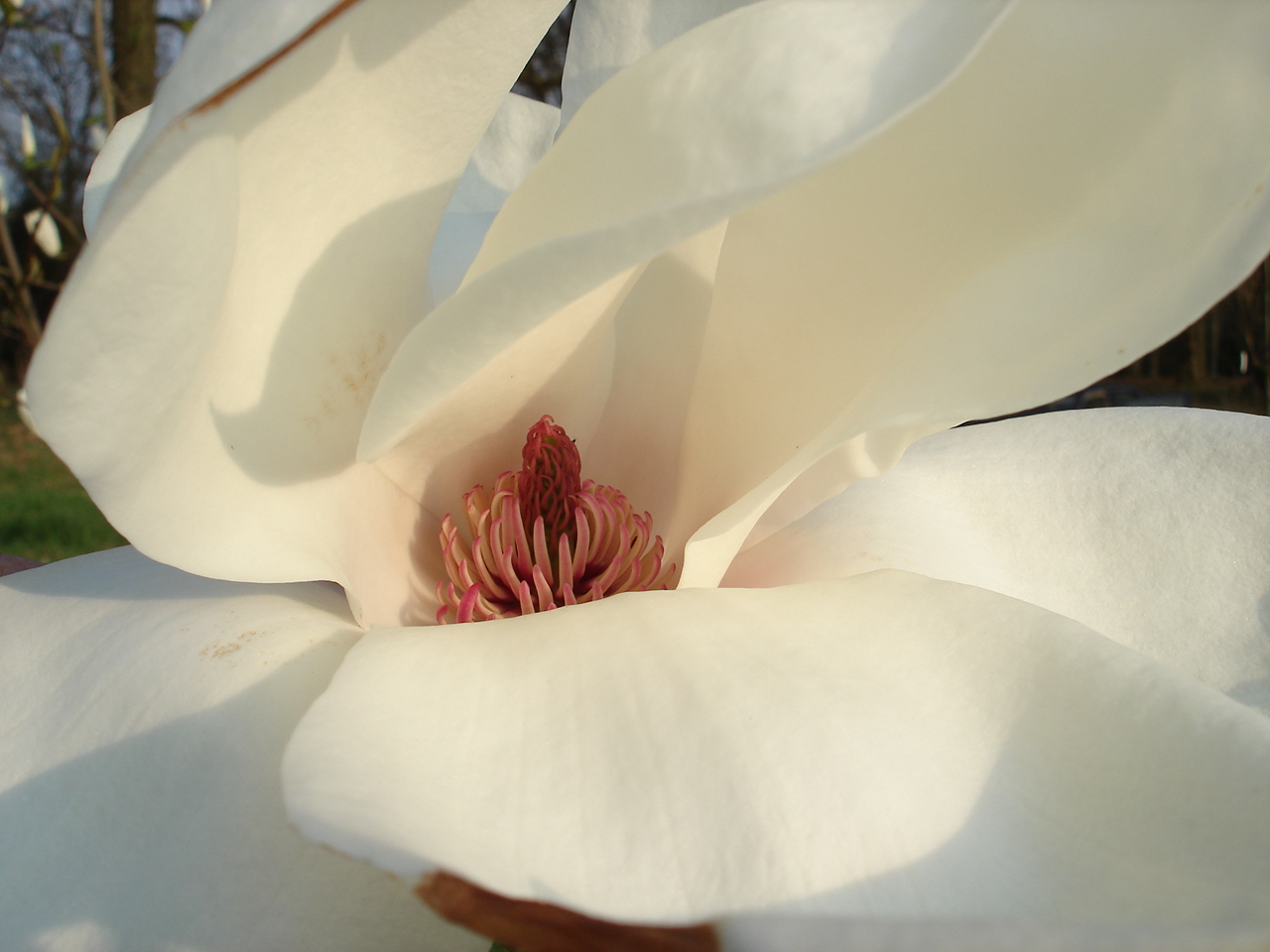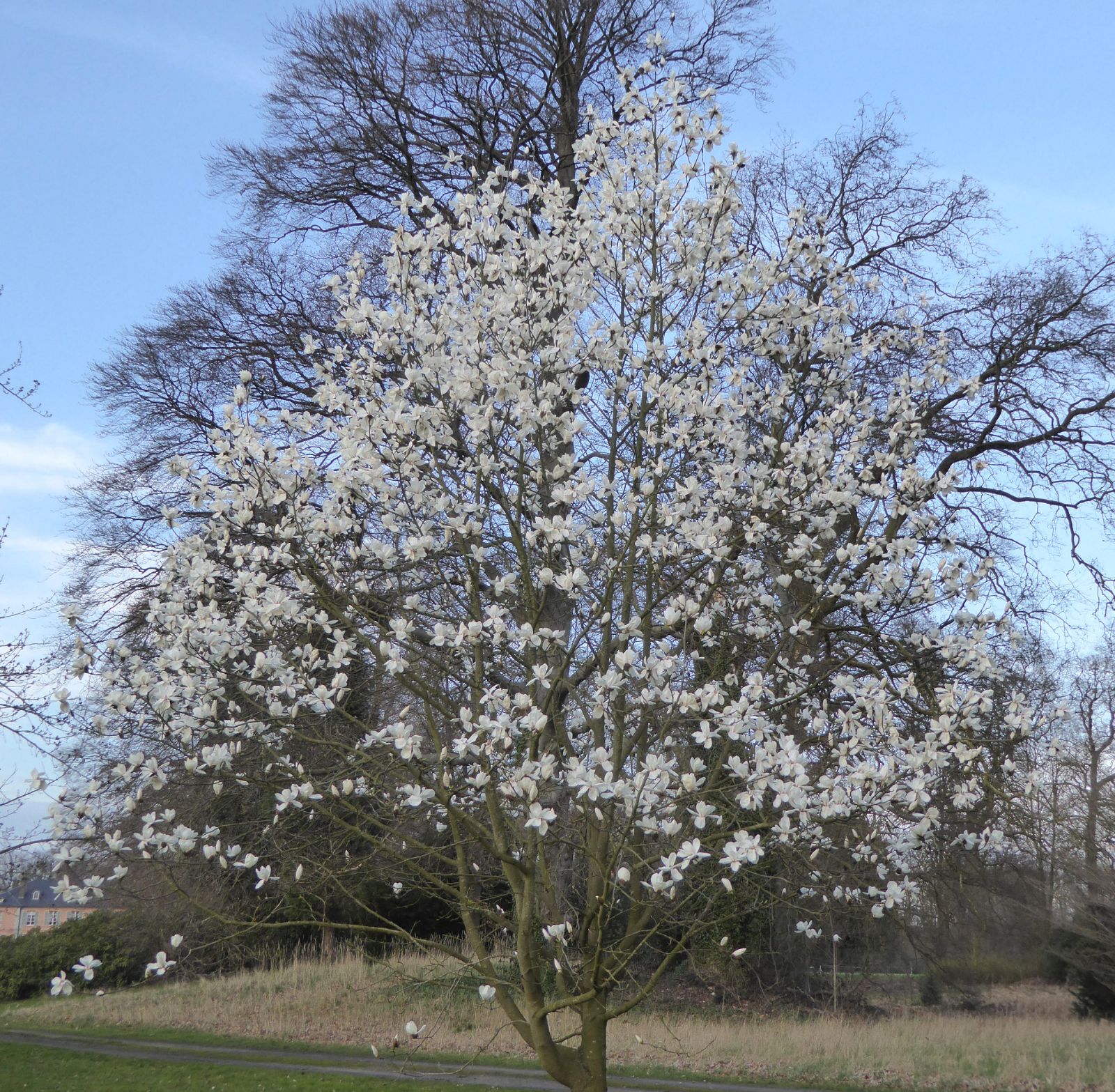Magnolia Cultivars S
Sponsor
Kindly sponsored by
The Roy Overland Charitable Trust

Credits
Julian Sutton (2022)
Recommended citation
Sutton, J. (2022), 'Magnolia Cultivars S' from the website Trees and Shrubs Online (treesandshrubsonline.
Genus
Infraspecifics
- 'Saint Mary'
- 'Samuel Sommer'
- 'San Jose'
- 'Santa Rosa'
- 'Sara Gladney'
- 'Satellite'
- 'Sawada's Cream'
- 'Sawada's Pink'
- 'Sayonara'
- 'Seiju'
- 'Semiplena'
- 'Sentinel'
- 'Serene'
- 'Shibamichi'
- SHIRAZZ™
- 'Sidbury'
- 'Silk Road'
- 'Silver Cloud'
- 'Silver Parasol'
- 'Sir Harold Hillier'
- 'Skylands Best'
- 'Slavin's Snowy'
- 'Snow Bouquet'
- 'Snowdrift'
- 'Solar Flair'
- 'Southern Charm'
- 'Speciosa'
- 'Spectrum'
- 'Spring Rite'
- 'Spring Snow'
- SPRING WELCOME®
- 'Star Wars'
- 'STRgra'
- 'String of Pearls'
- 'Strybing White'
- 'Stubbs Purple'
- 'Summer Snowflake'
- 'Summer Solstice'
- 'Sun Ray'
- 'Sun Spire'
- 'Sunburst'
- 'Sundance'
- 'Sunrise'
- 'Sunsation'
- 'Sunset Swirl'
- 'Susan'
- 'Susanna van Veen'
- 'Swarthmore Sentinel'
- 'Sweet Merlot'
- 'Sweet Simplicity'
- 'Sweet Sixteen'
- SWEET THING
- 'Sweetheart'
- 'Sybille'
- 'Symmes Select'
Other taxa in genus
- Magnolia acuminata
- Magnolia × alba
- Magnolia amabilis
- Magnolia amoena
- Magnolia aromatica
- Magnolia biondii
- Magnolia × brooklynensis
- Magnolia campbellii
- Magnolia cathcartii
- Magnolia cavaleriei
- Magnolia caveana
- Magnolia champaca
- Magnolia changhungtana
- Magnolia chapensis
- Magnolia compressa
- Magnolia conifera
- Magnolia Cultivars A
- Magnolia Cultivars B
- Magnolia Cultivars C
- Magnolia Cultivars D
- Magnolia Cultivars E
- Magnolia Cultivars F
- Magnolia Cultivars G
- Magnolia Cultivars H–I
- Magnolia Cultivars J
- Magnolia Cultivars K
- Magnolia Cultivars L
- Magnolia Cultivars M
- Magnolia Cultivars N–O
- Magnolia Cultivars P
- Magnolia Cultivars Q–R
- Magnolia Cultivars T
- Magnolia Cultivars U–V
- Magnolia Cultivars W–Z
- Magnolia cylindrica
- Magnolia dandyi
- Magnolia dawsoniana
- Magnolia de Vos and Kosar hybrids
- Magnolia decidua
- Magnolia delavayi
- Magnolia denudata
- Magnolia doltsopa
- Magnolia duclouxii
- Magnolia ernestii
- Magnolia figo
- Magnolia floribunda
- Magnolia × foggii
- Magnolia fordiana
- Magnolia foveolata
- Magnolia fraseri
- Magnolia fulva
- Magnolia globosa
- Magnolia × gotoburgensis
- Magnolia grandiflora
- Magnolia grandis
- Magnolia Gresham hybrids
- Magnolia guangdongensis
- Magnolia hookeri
- Magnolia insignis
- Magnolia Jury hybrids
- Magnolia × kewensis
- Magnolia kobus
- Magnolia kwangtungensis
- Magnolia laevifolia
- Magnolia lanuginosa
- Magnolia leveilleana
- Magnolia liliiflora
- Magnolia × loebneri
- Magnolia lotungensis
- Magnolia macclurei
- Magnolia macrophylla
- Magnolia martini
- Magnolia maudiae
- Magnolia nitida
- Magnolia obovata
- Magnolia officinalis
- Magnolia opipara
- Magnolia × proctoriana
- Magnolia × pruhoniciana
- Magnolia rostrata
- Magnolia salicifolia
- Magnolia sapaensis
- Magnolia sargentiana
- Magnolia sieboldii
- Magnolia sinensis
- Magnolia sinica
- Magnolia sinostellata
- Magnolia × soulangeana
- Magnolia sprengeri
- Magnolia stellata
- Magnolia tamaulipana
- Magnolia × thomsoniana
- Magnolia tripetala
- Magnolia × veitchii
- Magnolia virginiana
- Magnolia × wieseneri
- Magnolia wilsonii
- Magnolia xinganensis
- Magnolia yunnanensis
- Magnolia yuyuanensis
- Magnolia zenii
Our primary references for cultivar information are Jim Gardiner’s (2000) ‘Magnolias: a Gardener’s Guide’ and Matt Lobdell’s (2021) register of cultivars for Magnolia Society International. Further references are cited where relevant. Other important accounts of cultivars include Dorothy Callaway’s (1994) ‘The World of Magnolias’ and (in German) Beet Heerdegen and Reto Eisenhut’s (2020) ‘Magnolien und Tulpenbäume: Magnoliaceae’. Magnolia Society International’s journal ‘Magnolia’ is an ongoing trove of information.
'Saint Mary'
See Magnolia grandiflora ‘Saint Mary’.
'Samuel Sommer'
See Magnolia grandiflora ‘Samuel Sommer’.
'San Jose'
See Magnolia × soulangeana ‘San Jose’.
'Santa Rosa'
See Magnolia virginiana ‘Santa Rosa’.
'Sara Gladney'
See Magnolia macrophylla ‘Sara Gladney’.
'Satellite'
See Magnolia virginiana ‘Satellite’.
'Sawada's Cream'
See Magnolia denudata ‘Sawada’s Cream’.
'Sawada's Pink'
See Magnolia denudata ‘Sawada’s Pink’.
'Sayonara'
(M. × veitchii) × (M. × soulangeana 'Lennei Alba')
Awards
AGM
RHS Hardiness Rating: H6
USDA Hardiness Zone: 6-9
Flowers precocious (March to April in S England), goblet-shaped; tepals broad, to 12 cm long, white flushed purple-pink at the base, some greening also on the outer tepals; the pink flush fades out gradually, often reaching more than halfway up the tepals. A vigorous and floriferous medium tree, often multistemmed; one of the original Gresham hybrids, named in 1964 (Edwards & Marshall 2019). The cultivar name is borrowed from a Japanese word for ‘goodbye’; its relevance here is far from clear.
'Seiju'
See Magnolia acuminata ‘Seiju’.
'Semiplena'
See Magnolia sieboldii ‘Semiplena’.
'Sentinel'
RHS Hardiness Rating: H5
USDA Hardiness Zone: 7-9
Flowers precocious, large and tulip-shaped, deep reddish-pink towards the base, paler towards the tepal tips. A vigorous, columnar medium tree. Reputed to be a Gresham hybrid selected before 2018; parentage unknown (Piet Vergeldt Boomkwekerij 2022; Frank P Matthews 2022).
'Serene'
M. liliiflora × M. 'Mark Jury'
RHS Hardiness Rating: H5
USDA Hardiness Zone: 7-9
Flowers precocious but late, April to early May in S England, upright and bowl-shaped, deep strawberry pink. A vigorous small tree raised by Felix Jury, New Zealand, introduced in the early 1970s by Os Blumhardt (Jury 2017; Jury & Jury 2021). Highly rated by Philippe de Spoelberch, Belgium (pers. comm. 2021).
'Shibamichi'
See Magnolia foveolata ‘Shibamichi’.
SHIRAZZ™
See Magnolia Cultivars U–V ‘Vulden’.
'Sidbury'
See Magnolia campbellii Raffillii Group.
'Silk Road'
See Magnolia × pruhoniciana ‘Silk Road’.
'Silver Cloud'
See Magnolia doltsopa ‘Silver Cloud’.
'Silver Parasol'
See Magnolia × pruhoniciana ‘Silver Parasol’.
'Sir Harold Hillier'
M. campbellii Alba Group × perhaps M. denudata
RHS Hardiness Rating: H5
USDA Hardiness Zone: 7-9
Flowers precocious, exceptionally beautiful white goblets to 30 cm across. A medium tree selected before 2000 by Nigel Holman, Cornwall.
'Skylands Best'
See Magnolia acuminata ‘Skylands Best’.
'Slavin's Snowy'
See Magnolia × proctoriana ‘Slavin’s Snowy’.
'Snow Bouquet'
See Magnolia maudiae ‘Snow Bouquet’.
'Snowdrift'
See Magnolia × loebneri ‘Snowdrift’.
'Solar Flair'
(M. × brooklynensis 'Woodsman') × M. 'Gold Star'
RHS Hardiness Rating: H6
USDA Hardiness Zone: 5-9
Flowers late, just before or with the new leaves, tulip-shaped, heavily textured, pale yellow sometimes with a faint pink flush at the tepal bases (Missouri Botanical Garden 2022; Piet Vergeldt Boomkwekerij 2022). An upright, pyramidal small tree selected before 1997 by August Kehr, NC.
'Southern Charm'
See Magnolia grandiflora ‘Southern Charm’.
'Speciosa'
See Magnolia × soulangeana ‘Speciosa’.
'Spectrum'
M. liliiflora 'Nigra' × M. sprengeri 'Diva'
Awards
AGM
RHS Hardiness Rating: H6
USDA Hardiness Zone: 6-7
Flowers precocious, over a long spring season late enough usually to avoid frost, initially tulip-shaped, opening to 30 cm across, lightly fragrant; tepals 8–12, rich red-pink outside, paler inside. A small tree, upright and pyramidal, more spreading with age (Edwards & Marshall 2019). From a cross made in 1963 by William Kosar, US National Arboretum. Highly rated by Philippe de Spoelberch, Belgium (pers. comm. 2021). The smaller flowered, narrow-crowned ‘Galaxy’ is a sister seedling.
'Spring Rite'
(M. × veitchii) × (M. × soulangeana 'Lennei Alba')
RHS Hardiness Rating: H5
USDA Hardiness Zone: 7-9
Flowers precocious, February or early March in S England, open cup-shaped to 30 cm across; tepals 9, silvery-white with a hint of rose at the bases. A broad, fast growing small tree, one of the original Gresham hybrids named in 1962, but introduced to the nursery trade as late as 1991 by Gossler Farms, OR. Williams, Gardiner & Gallagher (2016) highlight it as an up-and-coming cultivar in Europe.
'Spring Snow'
See Magnolia × loebneri ‘Spring Snow’.
SPRING WELCOME®
See Magnolia × loebneri ‘Ruth’.
'Star Wars'
M. liliiflora × M. campbellii
Awards
AGM
RHS Hardiness Rating: H5
USDA Hardiness Zone: 6-9
Flowers emerging before or with the young leaves, prolific and large (typically 15 cm across, sometimes to 28 cm); tepals rich pink outside, paler inside, the outer ones inrolled. A medium tree with a strong central leader and pyramidal outline, flowering for 6–8 weeks from mid-March in southern England, often repeating in summer: a star performer indeed. Raised in the 1970s by Os Blumhardt, New Zealand who commented that ‘the outer tepals are rolled into tubes or spikes sticking out all around the buds and opening blooms. As they are borne freely and point in all directions, I call the plant ‘Star Wars” (Blumhardt 1982). Flowering from a young age, it makes a good substitute for M. campbellii where patience is not considered a virtue, although the flower form is less attractive.
'STRgra'
See Magnolia grandiflora ‘STRgra’.
'String of Pearls'
RHS Hardiness Rating: H6
USDA Hardiness Zone: 6-9
Flowers precocious (April in S England), carried right along the stems (hence the cultivar name), cup-shaped and upright; tepals 9, pure white, the inner 6 larger with a light pink base. A small tree raised by Phil Savage, MI, before 2003. Details of parentage disputed, but all accounts include M. cylindrica and M. denudata in its background (Lobdell 2021).
'Strybing White'
See under Magnolia campbellii Alba Group.
'Stubbs Purple'
See Magnolia figo ‘Stubbs Purple’.
'Summer Snowflake'
See Magnolia laevifolia ‘Summer Snowflake’.
'Summer Solstice'
M. globosa × probably pink-flowered M. obovata
RHS Hardiness Rating: H5
USDA Hardiness Zone: 7-9
Flowers on leafy shoots in early summer, globular, 10 cm across, scented; tepals 12, deep pink outside, creamy white inside; leaves dark green, broadly ovate to obovate, glaucous beneath. A small tree hardier and more vigorous than M. globosa. Bought as a seedling labelled ‘M. globosa’ at the Savill Garden Plant Centre, Windsor Great Park by Maurice Foster, who later inferred the parentage, naming it by 1995. Several sister seedlings are being grown in the Valley Gardens, Windsor.
'Sun Ray'
RHS Hardiness Rating: H6
USDA Hardiness Zone: 5-9
As ‘Sundance’ (below) but leaves larger, stems thicker, and flowers slightly larger and deeper yellow. Colchicine-induced decaploid sport on ‘Sundance’, by August Kehr, NC, registered 1995.
'Sun Spire'
(M. × brooklynensis 'Woodsman') × M. 'Elizabeth'
RHS Hardiness Rating: H6
USDA Hardiness Zone: 5-8
Flowers with or just before the new leaves, small, candle-shaped, deep yellow. A small tree distinguished by its fastigiate habit as well as fine flower colour. Rasied by August Kehr, NC, before 2000; sibling of ‘Sunsation’.
'Sunburst'
(M. × brooklynensis 'Woodsman') × M. 'Gold Star'
RHS Hardiness Rating: H5
USDA Hardiness Zone: 6-9
Flowers with the emerging leaves; tepals deep canary yellow, narrow, to 12 cm long. A quick-growing and very floriferous small tree; selected 1997 by August Kehr, who rated it very highly.
'Sundance'
M. acuminata hybrid × M. denudata
RHS Hardiness Rating: H6
USDA Hardiness Zone: 5-9
Flowers precocious, ‘barium yellow’, 20 cm across. Fast growing small to medium tree. Raised before 1986 by August Kehr, NC, from seed provided by Joe McDaniel. Starred as worthwhile by Philippe de Spoelberch, Belgium (pers. comm. 2021).
'Sunrise'
See Magnolia Cultivars L ‘Lv Xing’, which has been sold under this name in Europe against the raiser’s wishes; however, the name properly belongs to a little-known yellow-flowered M. acuminata hybrid raised by Dennis Ledvina, not described here (Lobdell 2021).
'Sunsation'
(M. × brooklynensis 'Woodsman') × M. 'Elizabeth'
RHS Hardiness Rating: H6
USDA Hardiness Zone: 5-8
Flowers before or with the new leaves, yellow stained pink at the base, goblet-shaped to 17 cm across. An upright small tree to about 6 m, selected by August Kehr, 1997; a sibling of the narrower, slower growing ‘Sun Spire’.
'Sunset Swirl'
M. 'Pink Royalty' × M. 'Daybreak'
RHS Hardiness Rating: H6
USDA Hardiness Zone: 5-8
Flowers late but still before the leaves, opening to a neat (not floppy) pinwheel; tepals vivid rosy pink outside, paler inside; flowers comparable to the well known ‘Daybreak’, but the less floppy form better shows off the strong outer colour. An upright, very vigorous, small to medium tree, flowering from a young age. Very hardy, USDA Zone 4 has been claimed (Boland 2008). Raised before 2007 by Dennis Ledvina, WI, it is a complex hybrid whose parentage includes M. acuminata, M. campbellii, M. denudata, M. liliiflora and M. sprengeri.
'Susan'
M. liliiflora 'Nigra' × M. stellata 'Rosea'
Awards
AGM
RHS Hardiness Rating: H6
USDA Hardiness Zone: 4-8
Flowers precocious, to 15 cm across, deep red-purple outside, slightly paler inside; tepals 6, sometimes twisted or inwardly rolled. A medium to large shrub, more rarely a small tree. Arguably the finest of ‘The Girls’ raised at the US National Arboretum before 1968; named for Susan Skinner, daughter of then USNA director Henry Skinner.
'Susanna van Veen'
M. sargentiana var. robusta × M. sprengeri
RHS Hardiness Rating: H5
USDA Hardiness Zone: 7-9
Flowers precocious, in March (S England), large, rose pink, deeper outside, rather floppy; flower buds with strikingly furry perules. A small to medium tree, distributed in Europe by Eisenhut, Switzerland, by 1989, although Williams (2019) claims an unspecified New Zealand origin. The more widely grown ‘Caerhays Belle’ has the same parentage.
'Swarthmore Sentinel'
See Magnolia denudata ‘Swarthmore Sentinel’.
'Sweet Merlot'
(M. × soulangeana 'Sweet Simplicity') × M. 'Jurmag1'
RHS Hardiness Rating: H6
USDA Hardiness Zone: 6-9
Flowers precocious, globular, wine-red outside, pale reddish-pink inside, lasting well both on the tree and when cut.. A small tree selected before 2008 by Vance Hooper, New Zealand (Hooper 2008), marketed in Europe and New Zealand.
'Sweet Simplicity'
See Magnolia × soulangeana ‘Sweet Simplicity’.
'Sweet Sixteen'
(M. × veitchii) × (M. × soulangeana 'Lennei Alba')
RHS Hardiness Rating: H5
USDA Hardiness Zone: 7-9
Flowers precocious, broadly cup-shaped from impressive 13 cm long buds, almost pure white with only a hint of pink at the base. A floriferous small to medium tree; when registered it was described as a ‘large oval-shaped tree’ (Fogg & Del Tredici 1984), but a plant at Caerhays Castle, Cornwall, has remained small despite flowering abundantly (Charles Williams in Williams, Gardiner & Gallagher (2016), highlighting it as an up-and-coming cultivar in Europe, potentially a stunning flowering tree). A Gresham hybrid selected before 1984 by Ken Durio, LA.
SWEET THING
See Magnolia virginiana ‘Perry Paige’.
'Sweetheart'
open-pollinated seedling of M. 'Caerhays Belle'
Awards
AGM
RHS Hardiness Rating: H5
USDA Hardiness Zone: 7-9
Flowers precocious, in March (S England – July to August in New Zealand), globular, to 30 cm across when fully open, fragrant; tepals ~12, broad, purplish pink outside, deeper at the base, pale pink to white inside. A small to medium tree, vigorous and more upright than its parent, raised by New Zealand nurseryman Peter Cave before 2000 (Edwards & Marshall 2019).
'Sybille'
(M. × soulangeana 'White Giant') × M. 'Leda'
RHS Hardiness Rating: H6
USDA Hardiness Zone: 6-9
Flowers precocious (March or early April in Belgium), upright and large, opening out to 30 cm across; tepals 9–12, broad, pure white or sometimes with a soft pink zone at the bases; stamens pale pink (Arboretum Wespelaar 2021). A small, potentially medium tree selected around 2010 by Philippe de Spoelberch, Belgium, from a cross made in 2000, and named for his sister; he notes ‘spectacular […] hardy’ (pers. comm. 2021).

